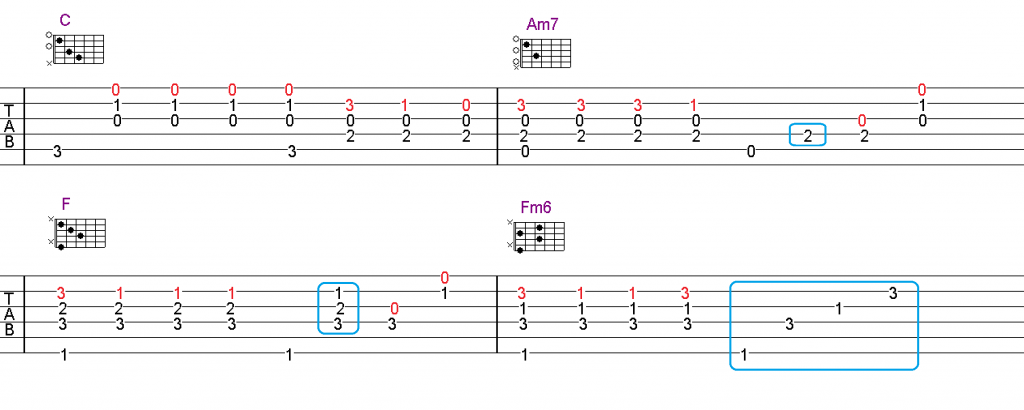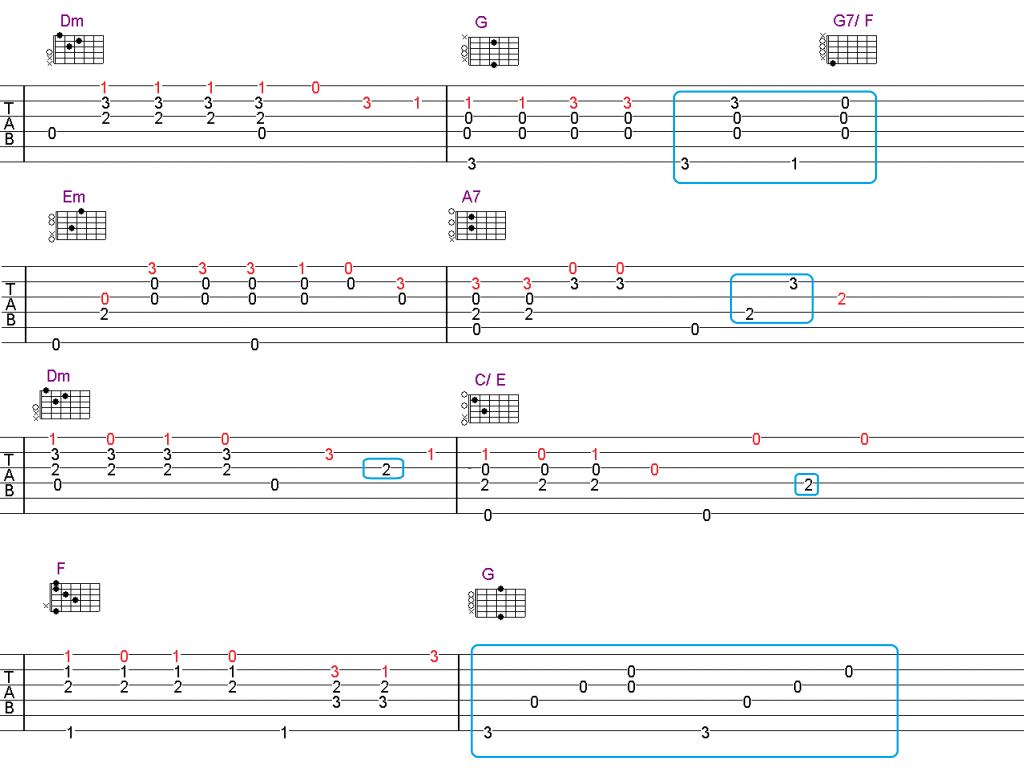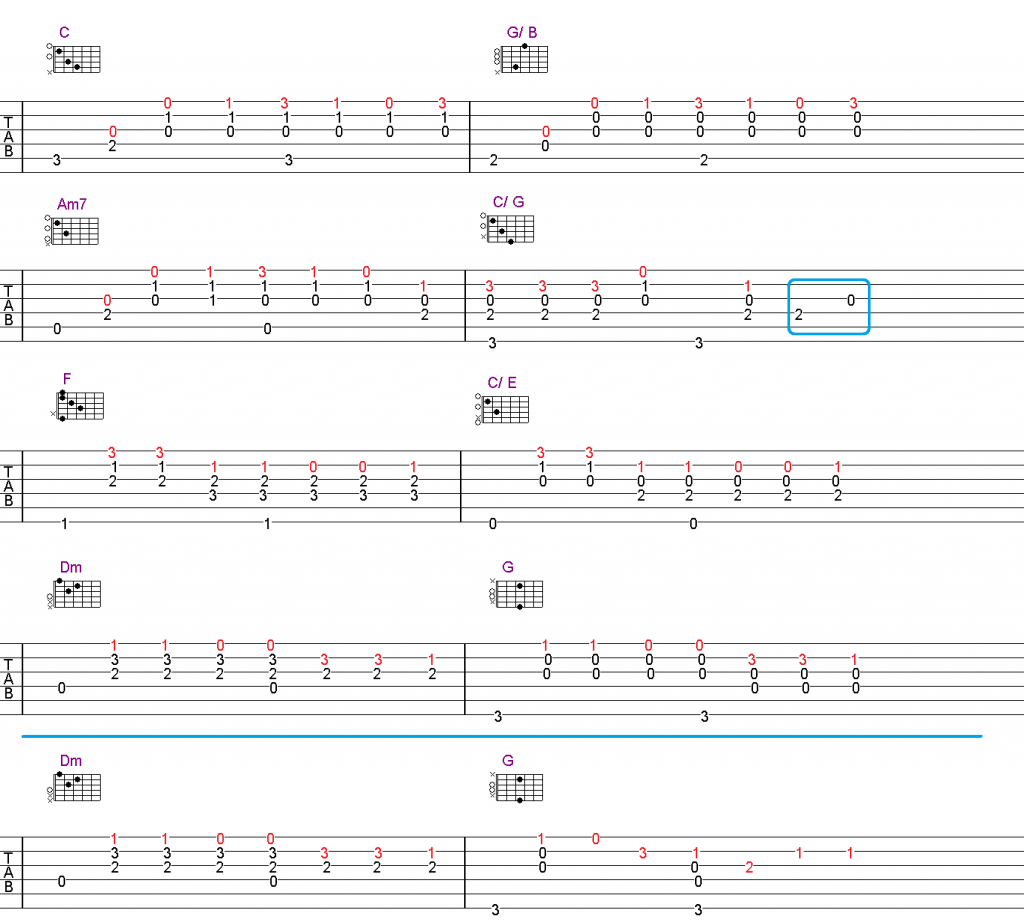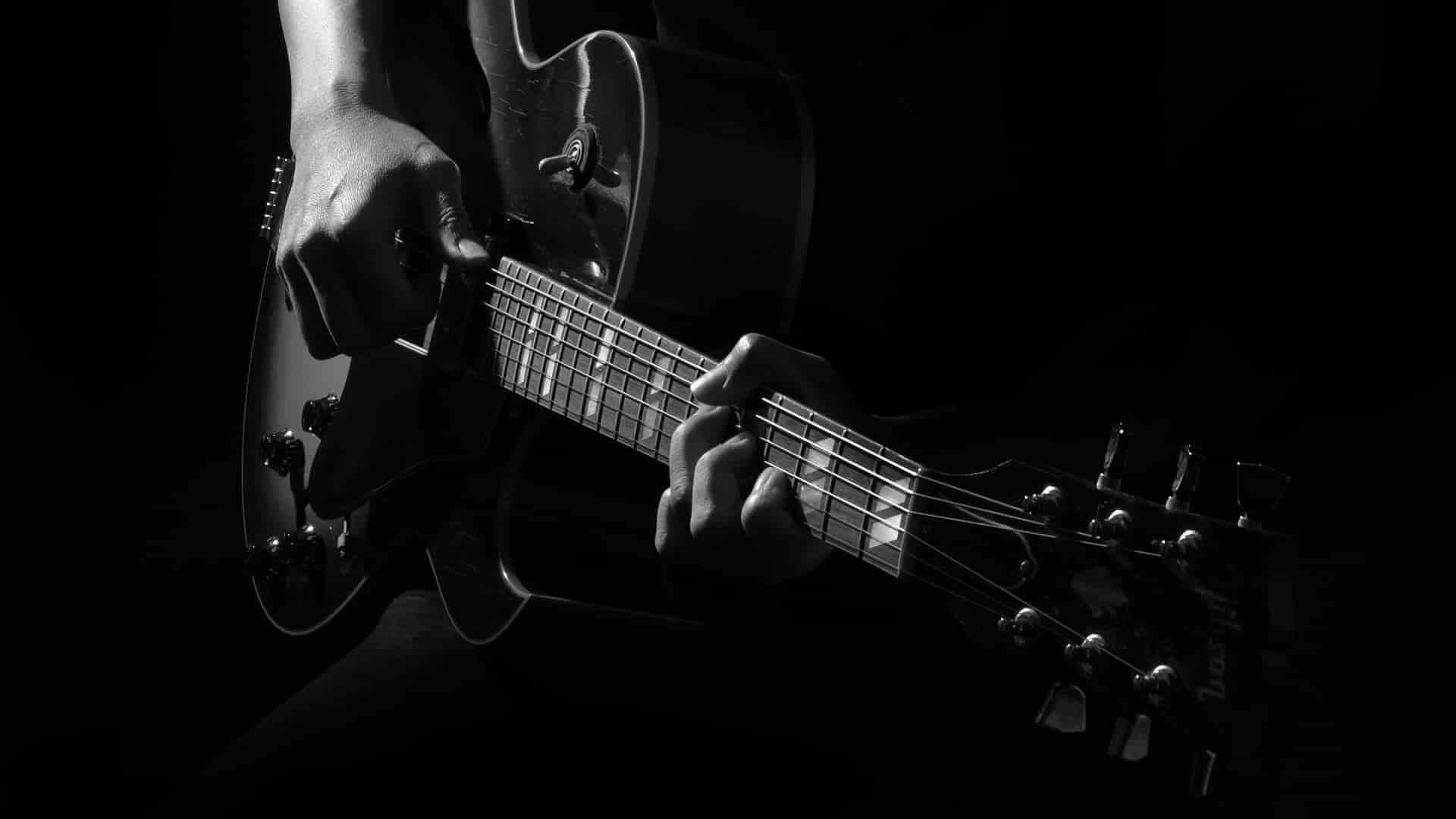GSCC Lesson 25
Past Lessons Summary and Links
If you are new to this series, here’s the links to past lessons:
| Lesson | Content |
| Lesson 1 | – Chords: C, Am, Dm, G7 |
| Lesson 2 | – Chords: Em , F |
| Lesson 3 | – Chords: G – Basic Guitar Strumming – 4 beat strum |
| Lesson 4 | – Chords: C7, Fm, D, D7 – Up Down Strum |
| Lesson 5 | – Chords: E, E7, Gm7 ,Gm – Strumming lightly on 1st few strings |
| Lesson 6 | – Chords: A, A7, G, G/B, Gm/Bb – 16 beat strum |
| Lesson 7 | – Key of G Major – Chords: Bm – Campfire Strum |
| Lesson 8 | – CAPO; Other chords in G Major – Chords: B7, B, Cm, Dm7, D/F#, Dm/F – “Chuck” Strum |
| Lesson 9 | – Plucking – Bass note of chords – 8 Beat Pluck #1 |
| Lesson 10 | – Chords: Bm7b5, F#m7b5 – Double String Pluck – Plucking Pattern For 2 Chords Bar |
| Lesson 11 | – What is 4/4 time signature – Intro to 3/4 time signature – 3/4 strumming – 3/4 plucking – Alternate bass |
| Lesson 12 | – 6/8 time signature – 6/8 strumming – 6/8 plucking – Alternate version of 6/8 plucking |
| Lesson 13 | – Create your own strumming / plucking pattern – Searching for chord charts online – Melody notes in key of C – Playing 1st instrumental song on guitar! – Melody notes in key of G – “Happy Birthday” melody in key of G |
| Lesson 14 | – Slap rhythm – Variation of slap rhythm – “Happy Birthday” solo guitar |
| Lesson 15 | – Introduction to Chord Melody Guitar Playing (solo guitar playing) – “Can’t Help Falling In Love” solo guitar |
| Lesson 16 | – Chord Melody Guitar of “月亮代表我的心” – Issues in last 2 songs we learned – Exploring beyond 1st 3 frets – CAGED system – Linking CAGED system to the notes – Fixing octave issues of last 2 songs/ playing melody at correct octave |
| Lesson 17 | – Barring and moving minor and dominant 7th chords; – Why are we learning barred chords? – Faster ways to build chords – “Let It Be” Solo Guitar |
| Lesson 18 | – Chords: Major 7th and Minor 7th – Why 7th chords? – Applying 7th chords to songs – “What A Wonderful World” Solo Guitar |
| Lesson 19 | – Chord Melody Guitar GYM (intense workout) – “Over The Rainbow” Solo Guitar in key of G |
| Lesson 20 | – Arrange chord melody guitar song in an optimal key/ put melody notes on 1st 2/3 strings – “Over the rainbow” Solo Guitar in key of C |
| Lesson 21 | – How to create rhythmic flow for chord melody guitar arrangement – The secret to chord melody guitar mastery |
| Lesson 22 | – Exam time!!! |
| Lesson 23 | – Revision before going to more advanced materials |
| Lesson 24 | -Chord Tones -Chord Inversions -Alternate Bass |
We had covered all the family chords and their siblings in key of C and G Major:
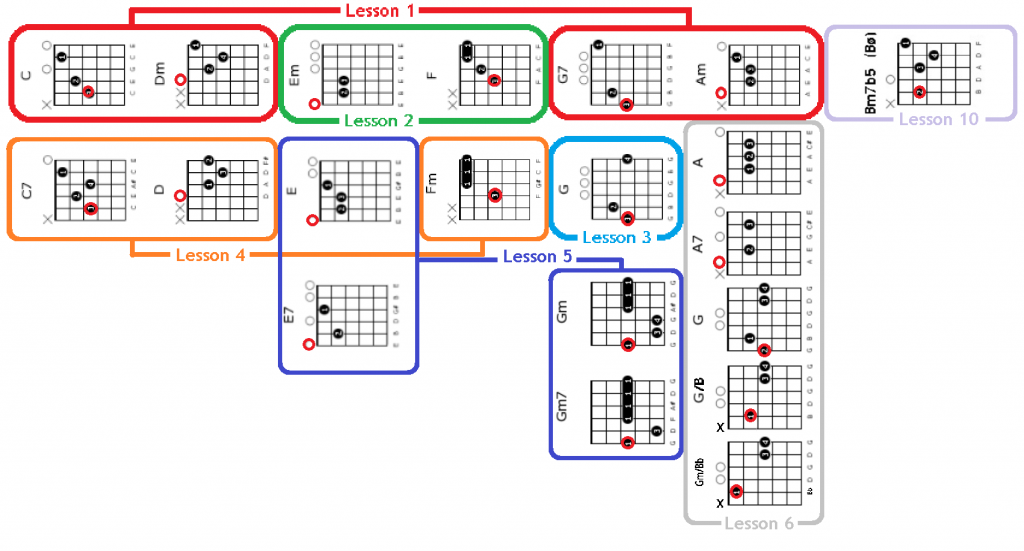
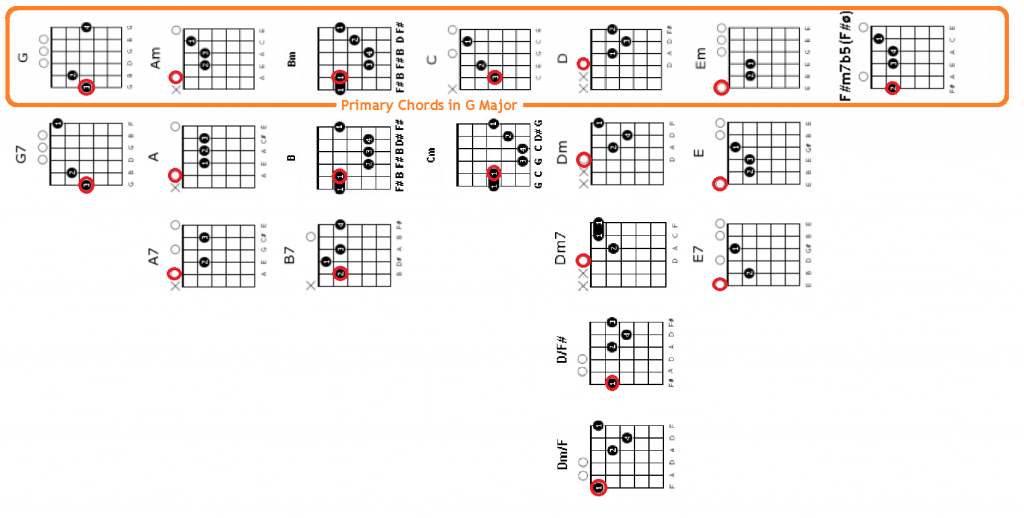
Key of C major and G major are common keys used by guitarist to play sing-along guitar.
We also looked at the guitarist best friend – CAPO , and it’s application.
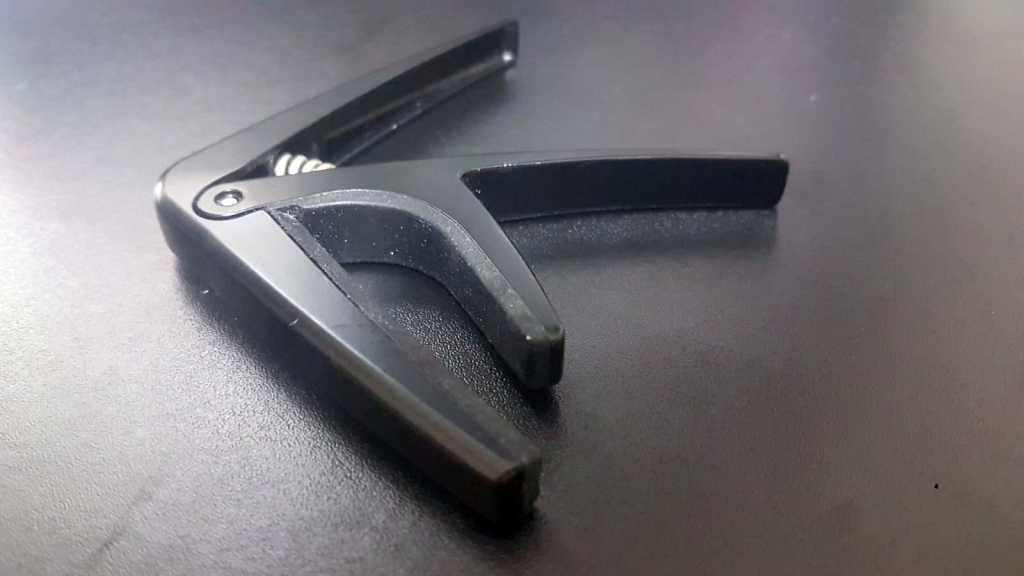
When we use the CAPO in conjunction with chords from C and G keys above , we are able to play almost every pop songs we wanted to play.
We have also looked at some basic strumming patterns:
| 1 | One strum per beat |
| 2 | Up-stroke strumming |
| 3 | Strumming lightly on first few strings |
| 4 | 16 beat strum |
| 5 | Campfire Strum |
| 6 | “Chuck” Strum |
| 7 | 3/4 Strum |
| 8 | 6/8 Strum |
And we had explored some basic pluckings.
| 1 | 8 beat pluck #1 |
| 2 | Double string pluck |
| 3 | 3/4 Pluck |
| 4 | “Alternate Bass” Pluck |
| 5 | 6/8 Pluck |
| 6 | Slap Rhythm |
And of course, we had fun learning all these songs !! They are specially produced “Karaoke for Guitar” videos (only vocal and metronome count) for you to practice your strumming / plucking:
We also learned how to put together and play chord melody guitar (solo guitar) song. Here are the main steps:
Step 1: Play the melody

Step 2: Find out the chords

Step 3: Combine the melody and the chords
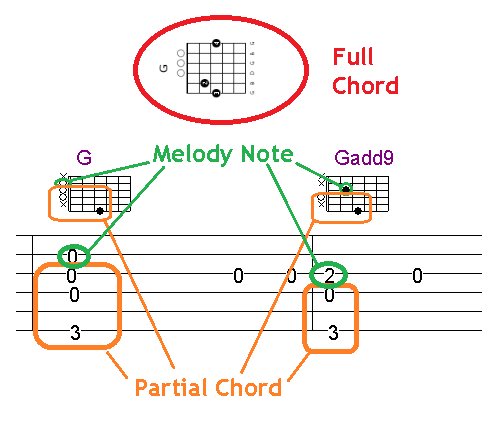

Step 4: Add in the accompaniment

Last week, we explored Chord Tones:
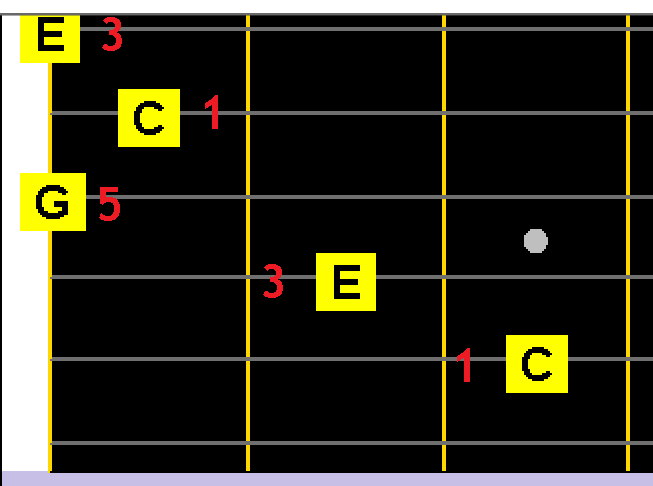
Chord Inversions;

And , Alternate Bass:

Click here to ask a question …
Further exploring other chords
In the past , we had look at the family chords and some of their sibling chords. Today , let’s explore some of the other common chord types.
Click here to ask a question …
Diminished chords
This is a very unique kind of chords. It is built by stacking notes 3 semi-tones away (minor 3rd) above it
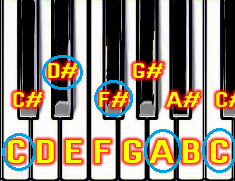
Here’s G diminished chord shape:
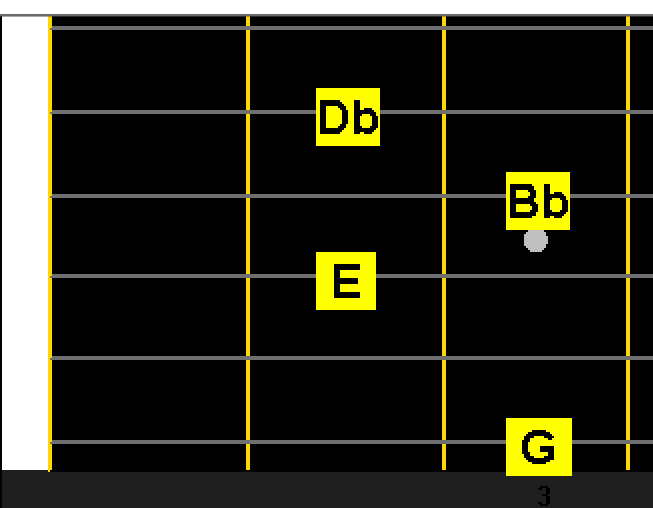
Because of it’s unique formula, the chord is repeated every 3 frets:

Remember the formula earlier on? The chord is built from stacking notes 3 semi-tones away.
Due to it’s symmetrical structure, we can called them as the inversions of G diminished chord, or name them as diminished chord of that lowest note :
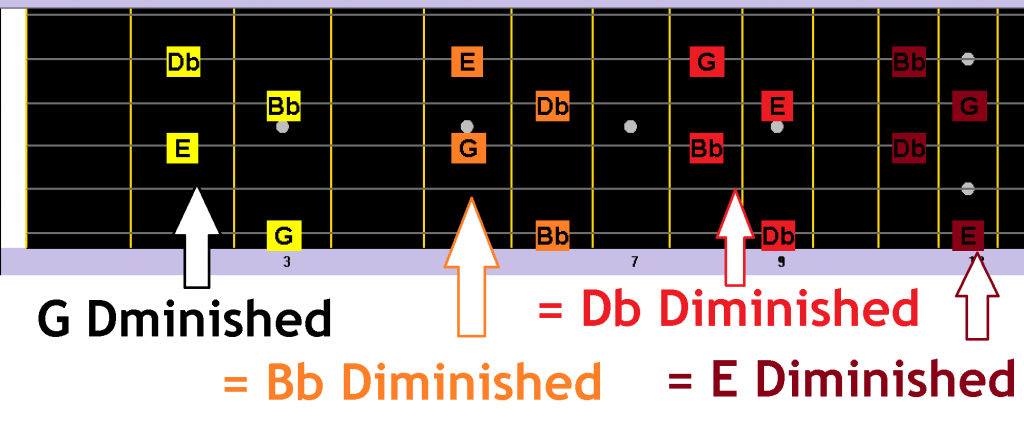
Here’s another diminished chord shape with bass on 6th string:
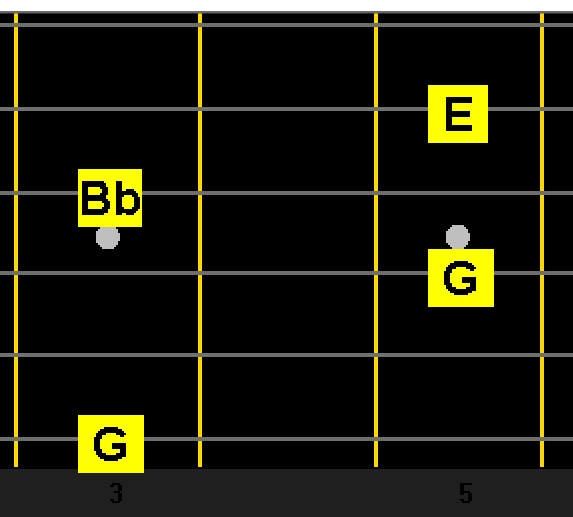
Here’s 2 variation of diminished chord shape with bass on 5th strings:

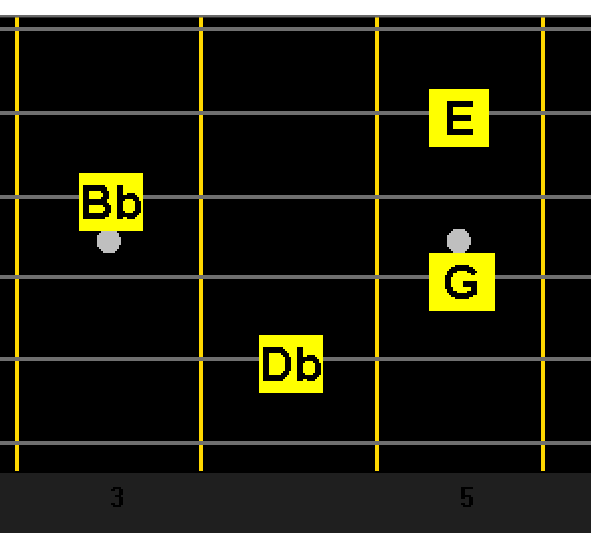
And here’s 2 variation of diminished chord shapes with bass on 4th string:
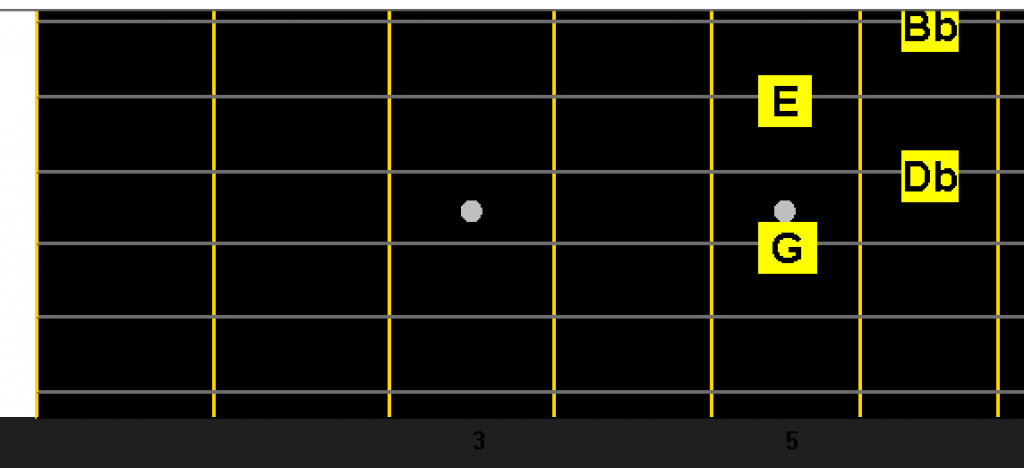
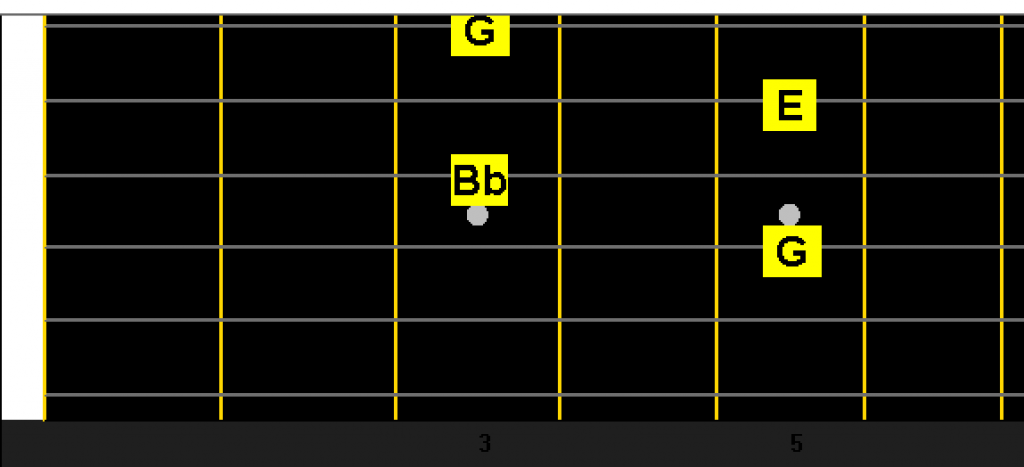
Diminished chord repeat itself every 3 frets, thus we only have 3 diminished chords in the entire universe (kind of):
| G dim = Bb dim = Db dim = E dim | Notes Combination 1 |
| Ab dim = B dim = D dim = Fdim | NotesCombination 2 |
| A dim = C dim = Eb dim = F#dim | Notes Combination 3 |
Here’s some chord progression example using diminished chords:
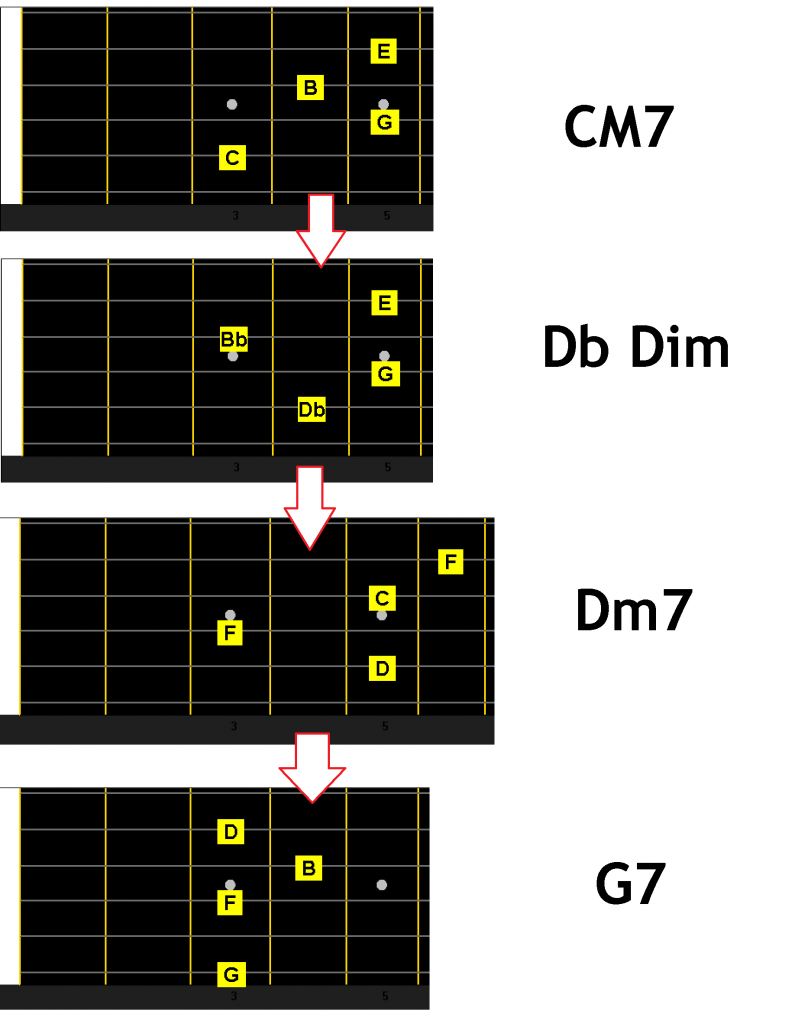
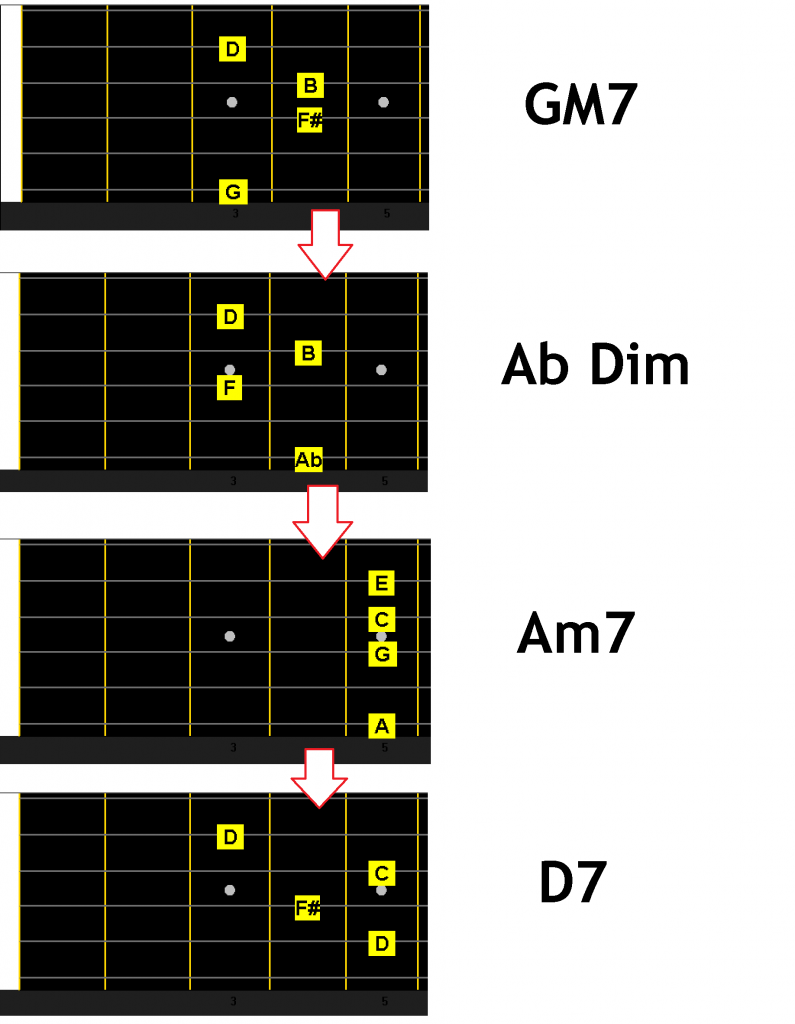
Click here to ask a question …
Augmented chord
Augmented chord is taking a major chord, raising the 5th degree.
So, if we take C major chord 1,3,5 , which is C,E,G, we will have 1,3,#5, which is C,E,G#:
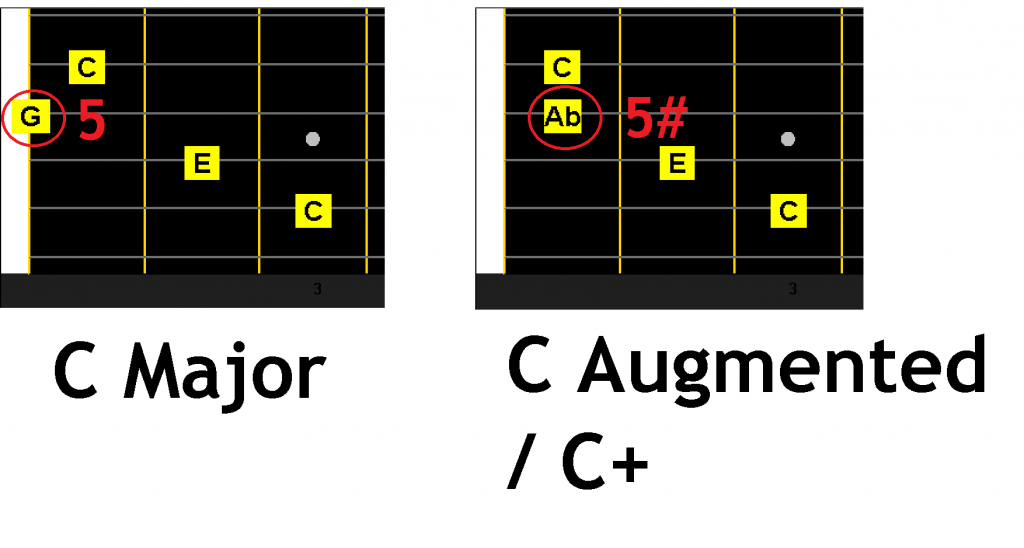
Augmented chord can also be written with a “+” symbol.
Here’s augmented chord with bass on 4th string:
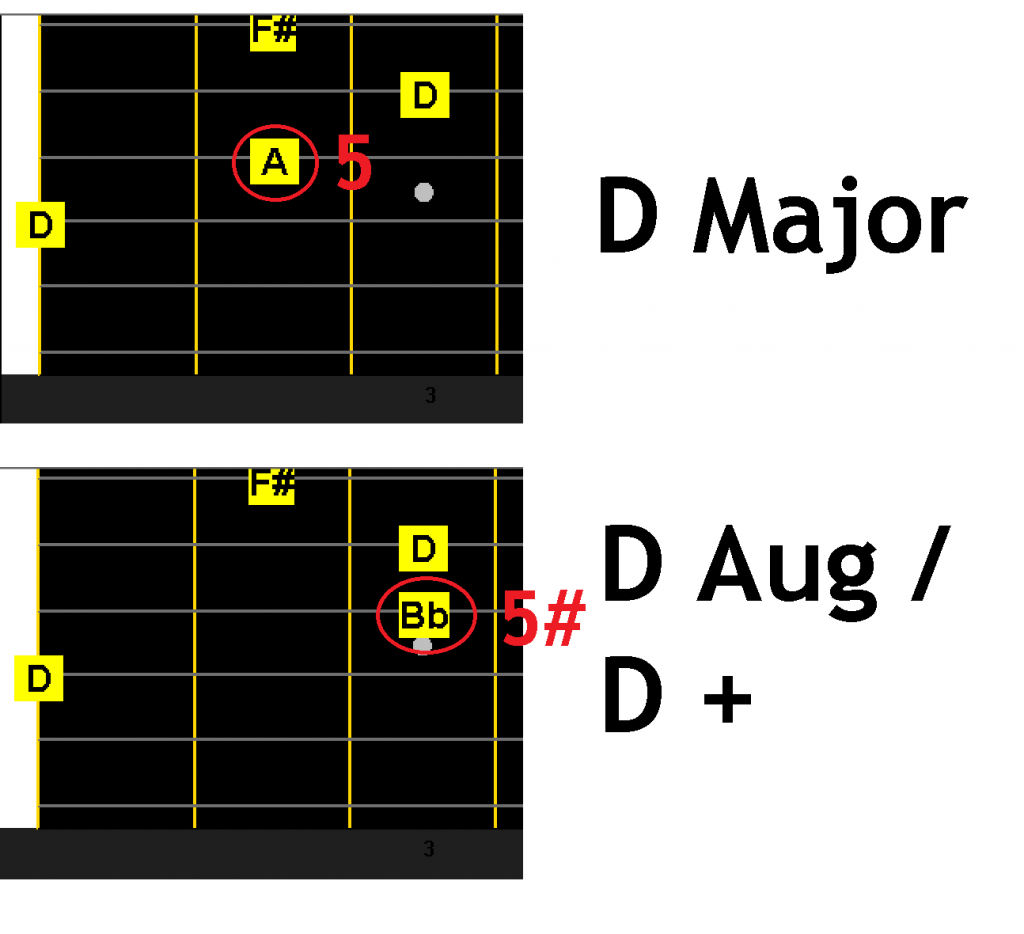
Here’s 2 shape of augmented chords with bass on 6th string:
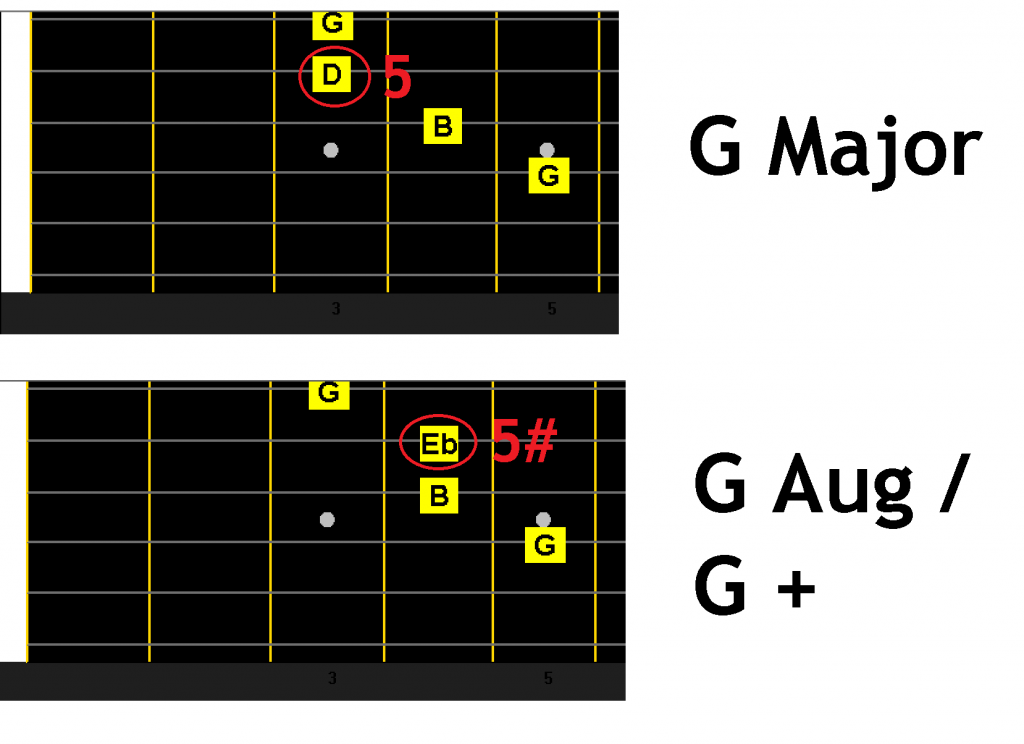
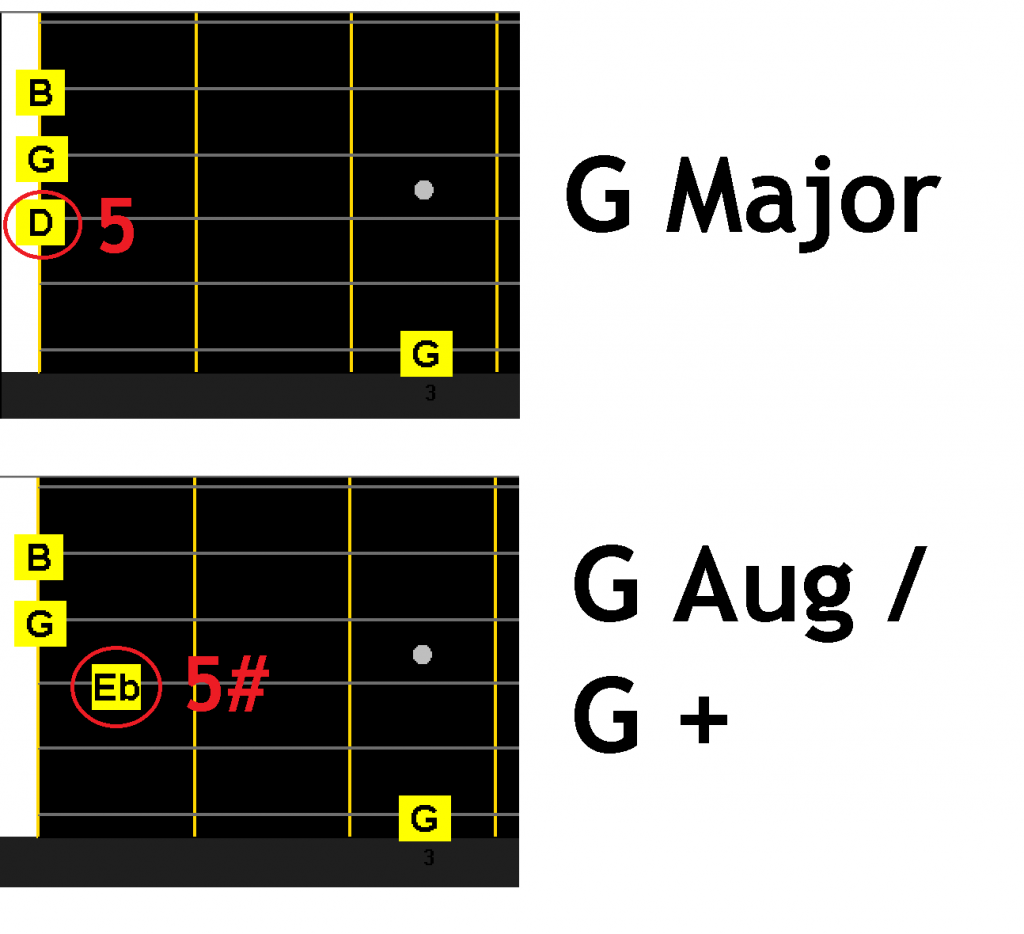
Click here to ask a question …
“6” chord
If we take a major chord and add a “6th” to it, we have a 6 chord.
If we take C major, 1,3,5, which is C,E,G, and add a 6 which is A note, we have C,E,G,A.
Here’s the common C6 chord shape:
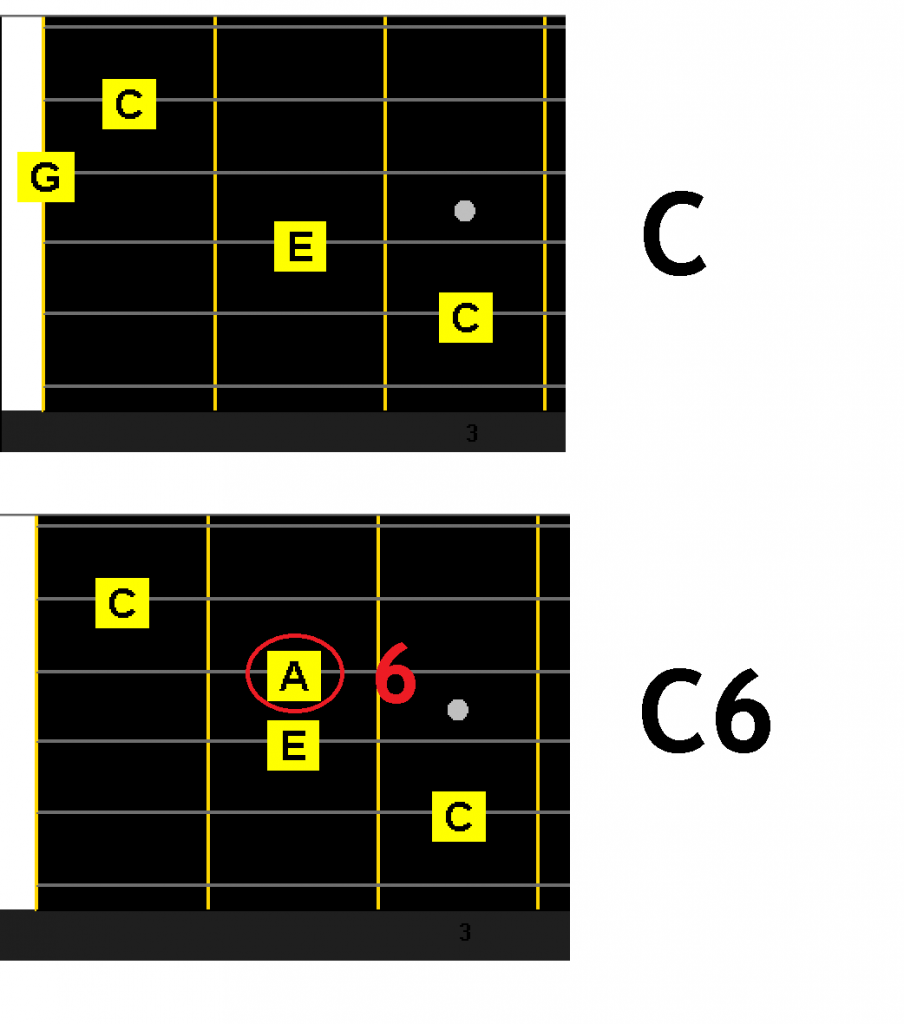
Here’s two 6 chord shapes with bass note on 6th string:
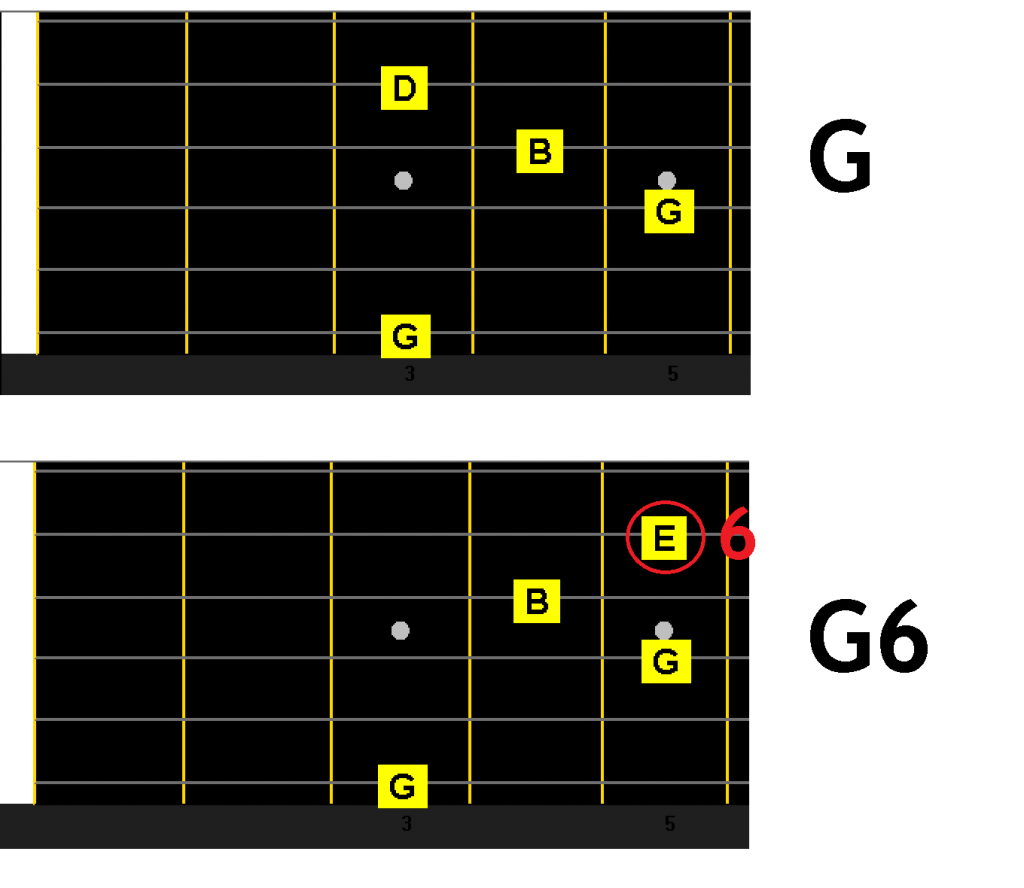
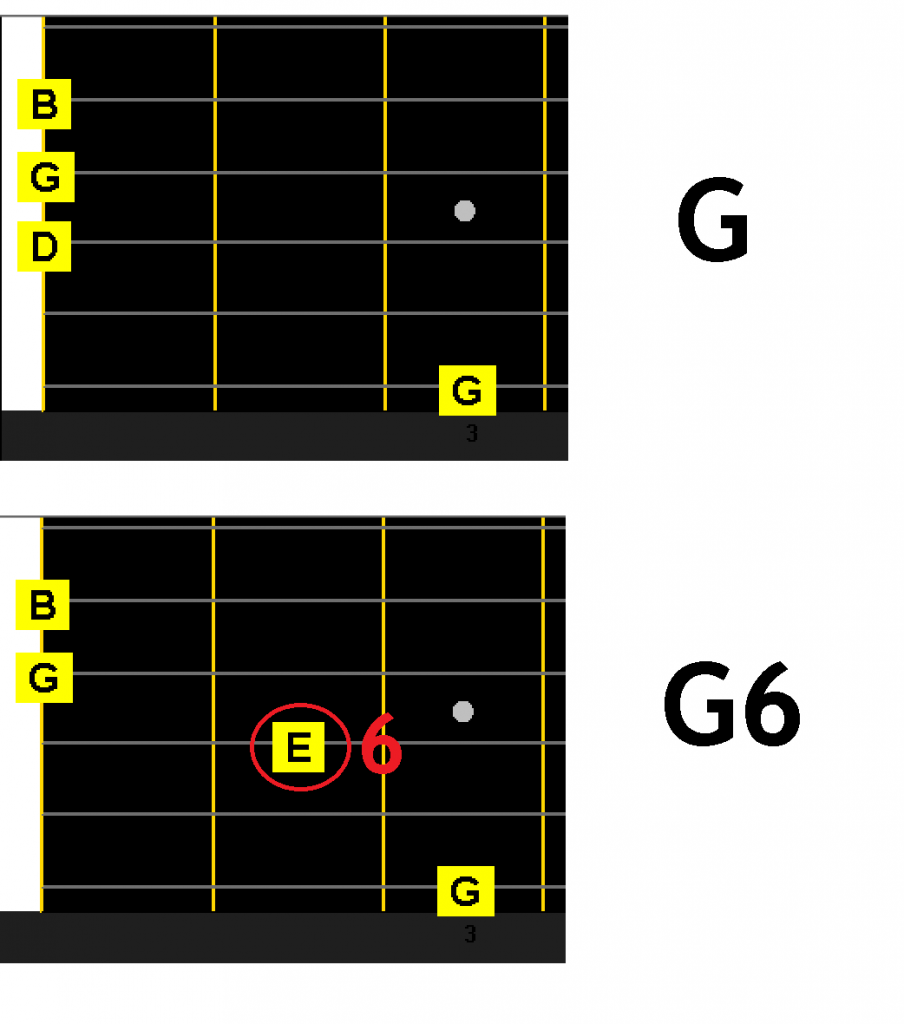
Let’s look at example of chord progression using both augmented and 6 chords.
Here’s excerpt from a very beautiful ballad which has this 2 chords in it:
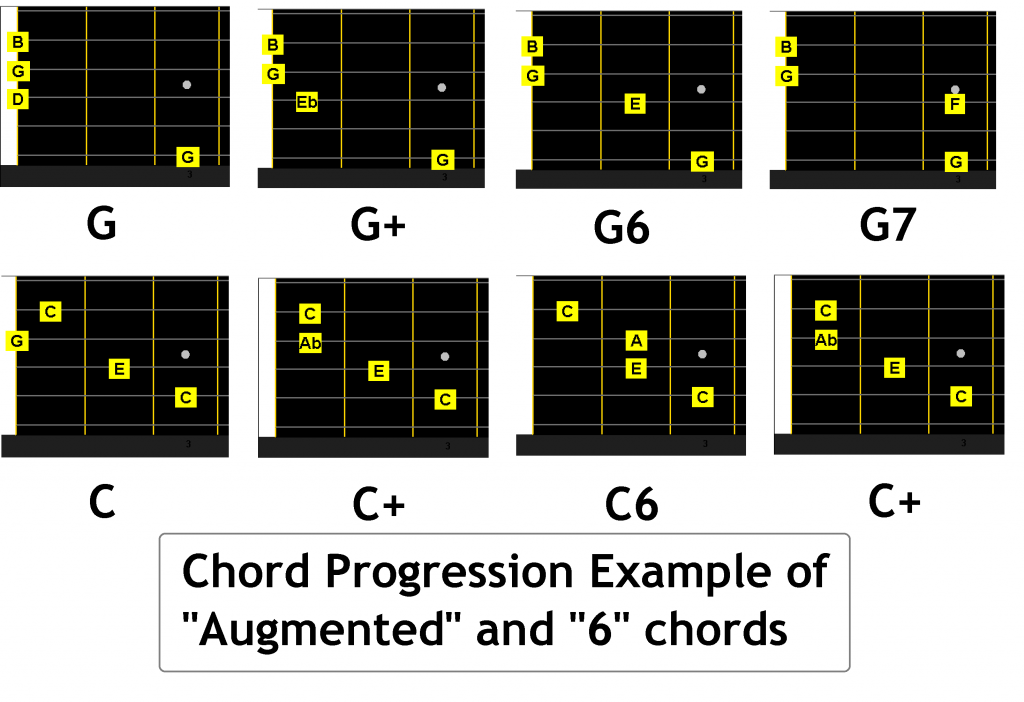
Can you guess which song it is? 😉
Click here to ask a question …
Chord degrees and extensions
We had looked at chord tones last week. We had learned for C major chord , we have C,E,G notes, which are the 1,3,5 degree of the chord. Let’s explore more.
We had learned that a chord is built by stacking the alternate note (from the scale) above it.
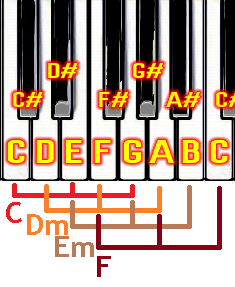
If we pick a chord, stack another alternate note above it (beyond the 5th), we get the 7th chord:
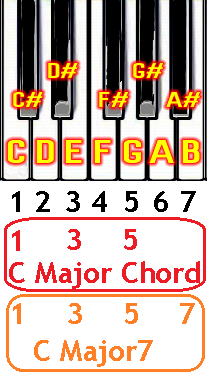
If we continue the number counting, we have this:
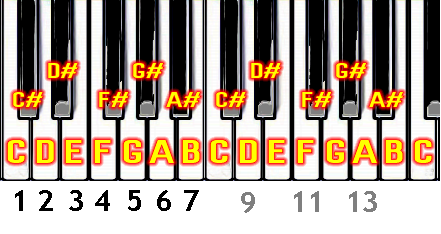
If we continue stacking the alternate notes using this new structure, we can create new chord types! But 8,10,12 are repeats chord tone from the lower octave, so we have to skip them:
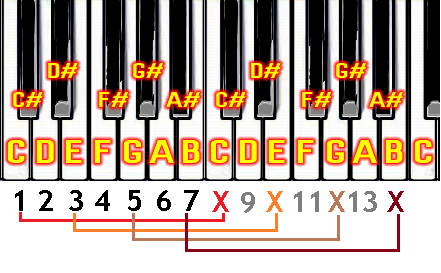
with this , we have:
| Chord degrees | Chord types |
| 1,3,5 | Basic Triad (Major,Minor) |
| 1,3,5,7 | 7th chord |
| 1,3,5,7,9 | 9th chord |
| 1,3,5,7,9,11 | 11th chord |
| 1,3,5,7,9,11,13 | 13th chord |
These are called the chord extension. They are used extensively on dominant chord, eg. G7,C7, D7 …
Click here to ask a question …
Dominant chord extensions
Let’s look at the extension of dominant chords:

Here’s chords with bass on 6th string:
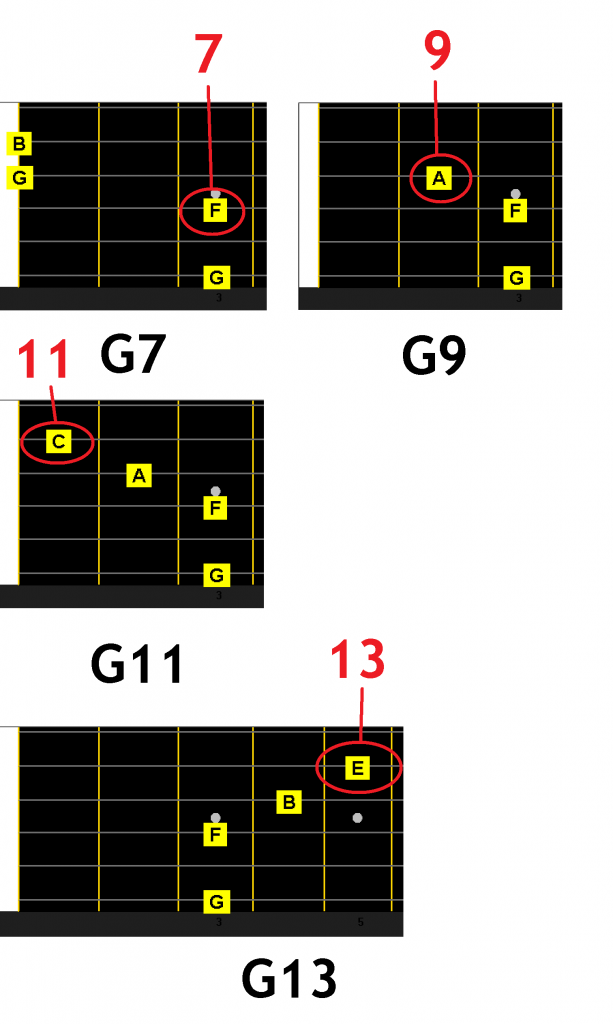
These extended chords produce lush sounding color and make an arrangement more interesting.
Click here to ask a question …
Major chord extensions
Here’s some common major chord extensions:
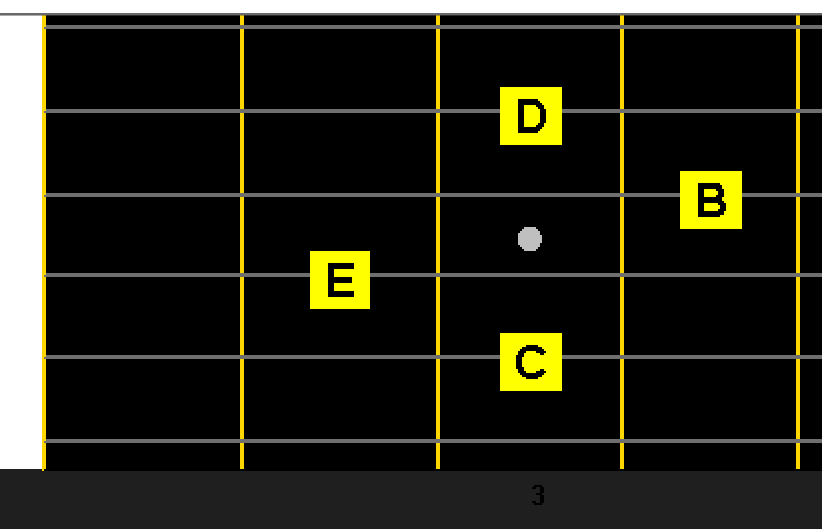
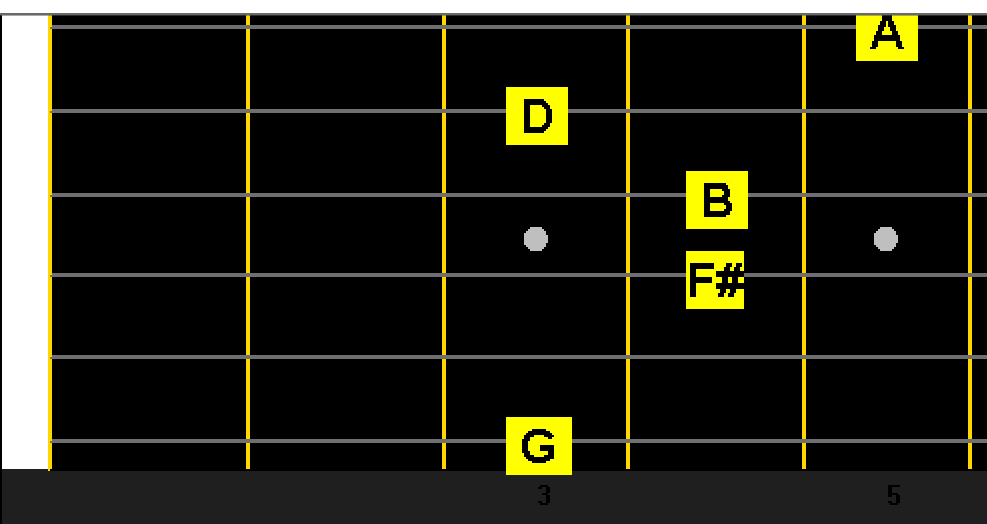
Click here to ask a question …
Minor chord extensions
Here’s some common minor chord extensions:
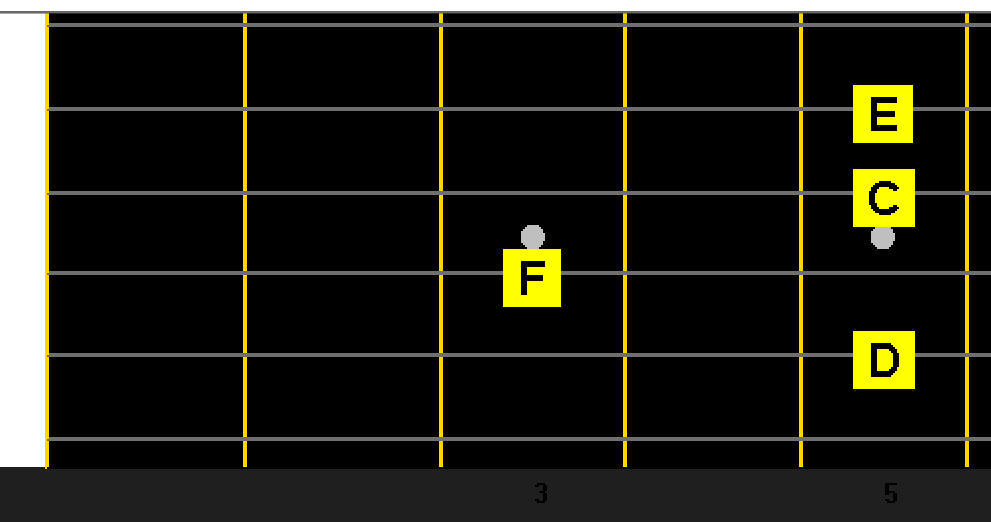
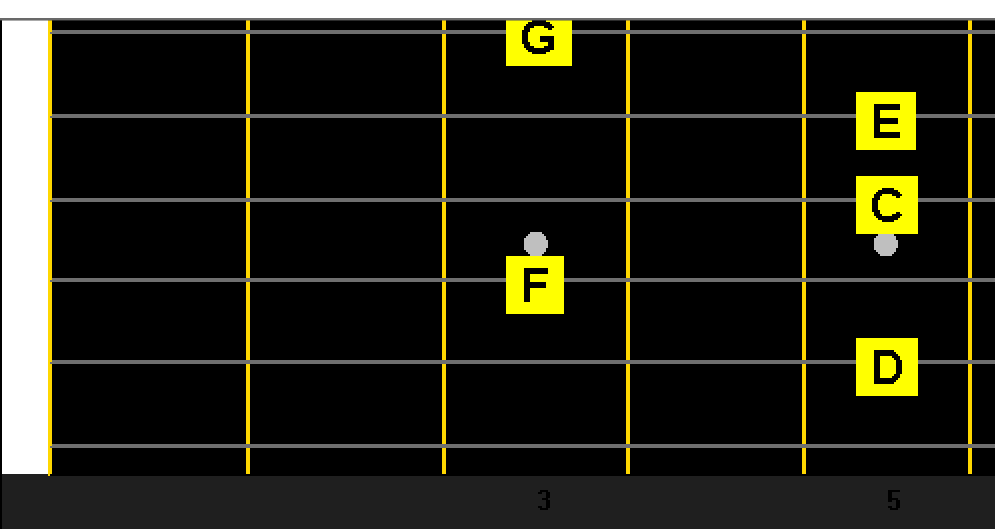
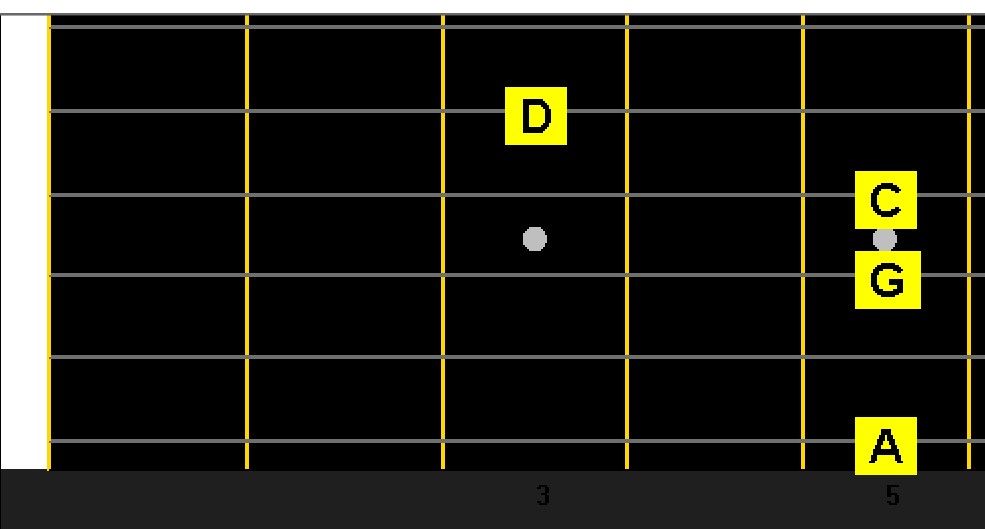
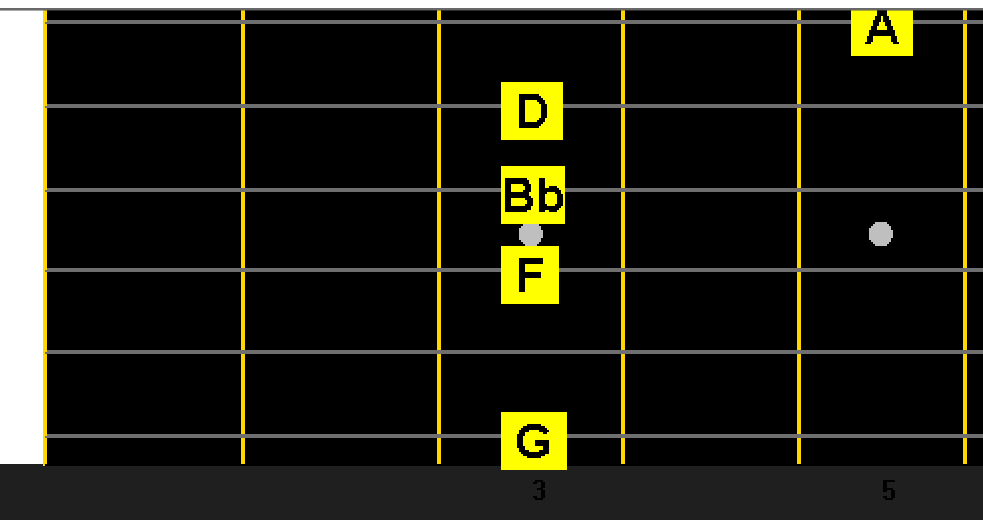
Click here to ask a question …
Altered chords
In jazz music, some of the chord degrees are being altered (sharped or flated) to create some exotic jazz flavoured. The degrees frequently being altered are 5th and 9th,
Here’s the altered 9th chord shapes:
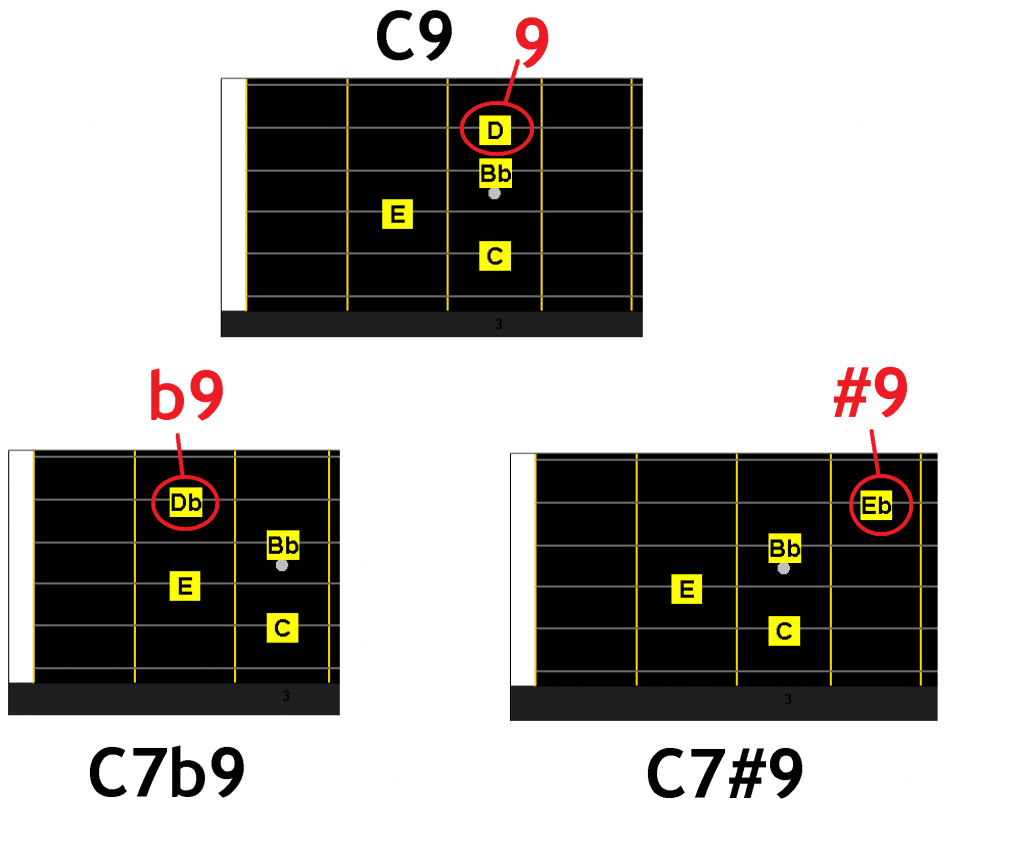
Here’s altered 5th chord shapes:
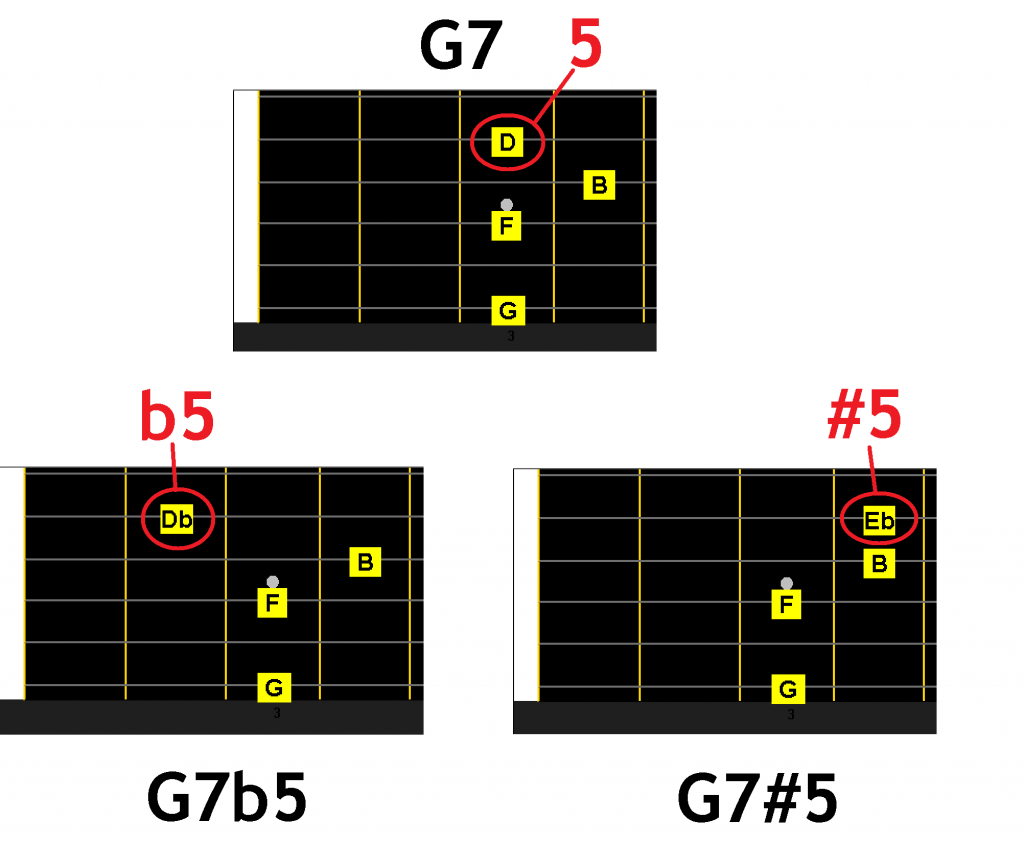
Click here to ask a question …
Add 9 chord
Sometimes we wanna add the 9th note but we don’t want the extension kinda feel, so we just add a 9th note to the major or minor chord. We called this kind of chord “add9” chord.
Here are a few “add9” chord shapes:
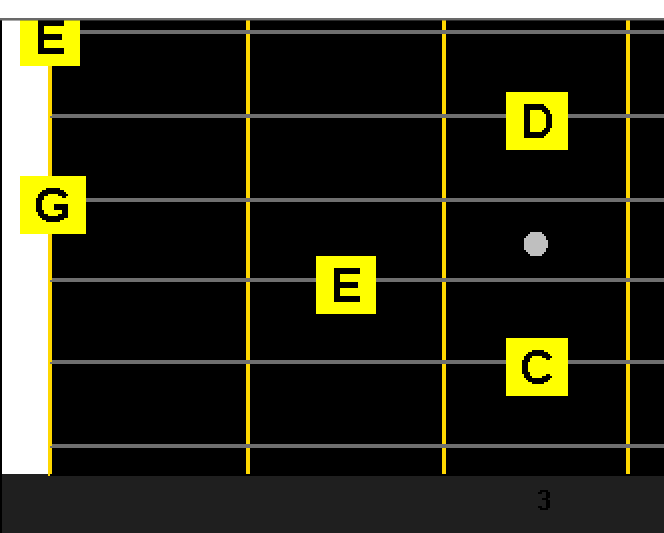
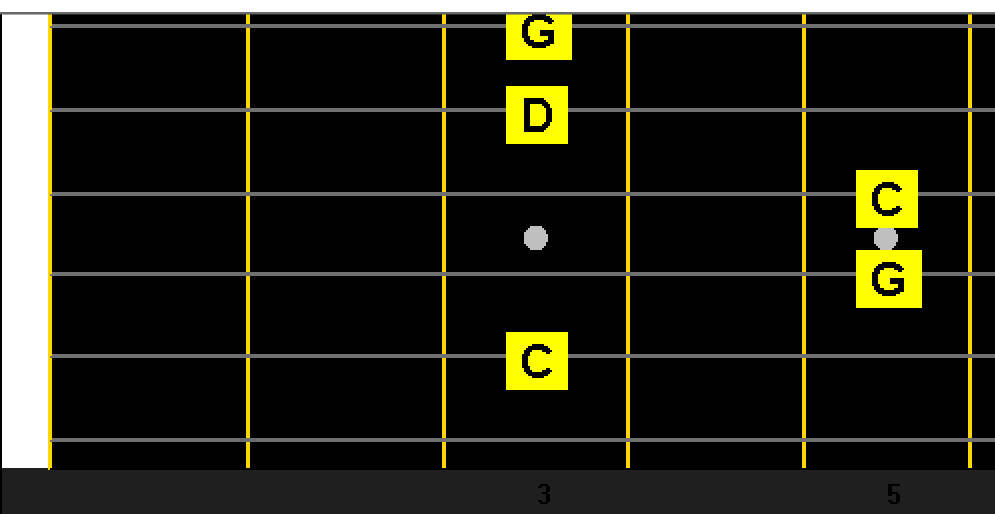
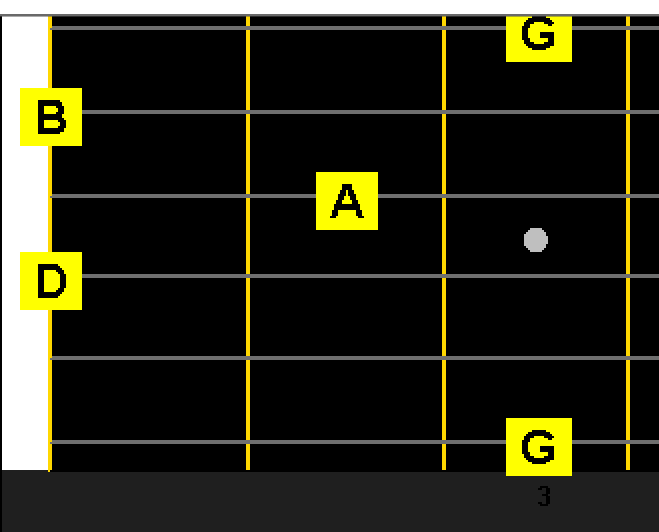
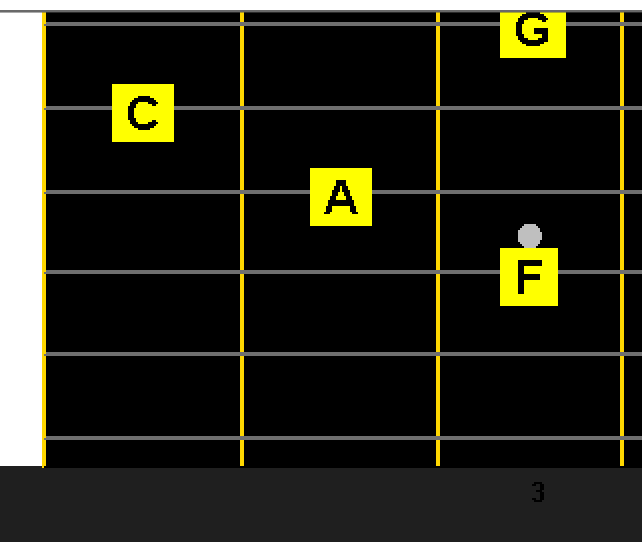
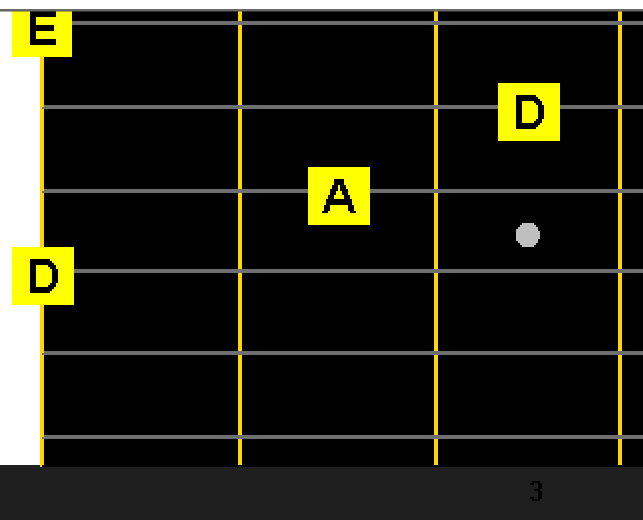
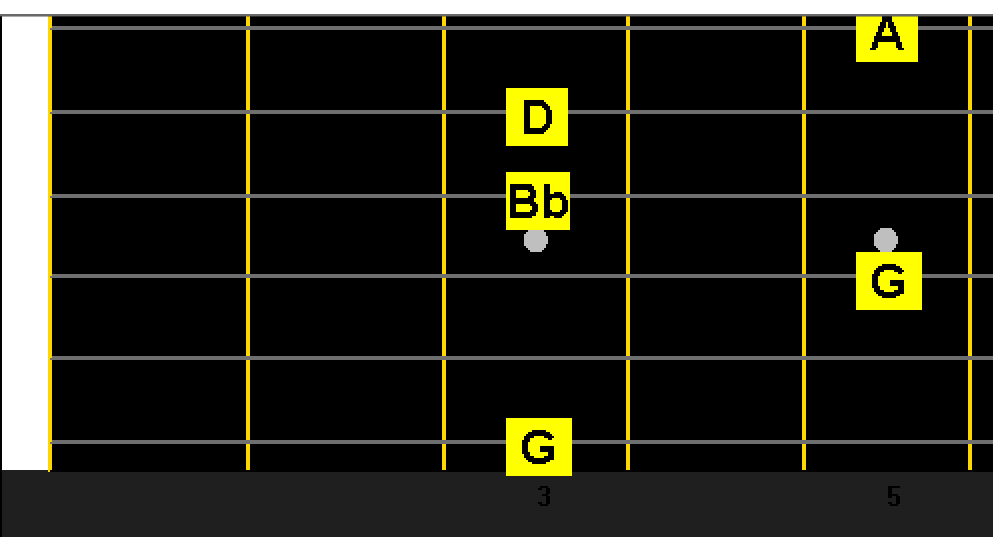
Click here to ask a question …
Suspended chord
If we omit the 3rd of the chord and replace it with 4th degree, we get a suspended chord. This kind of chord create some kind of “opened” sound. Try it out!
Here’s are a few sus chord shapes:
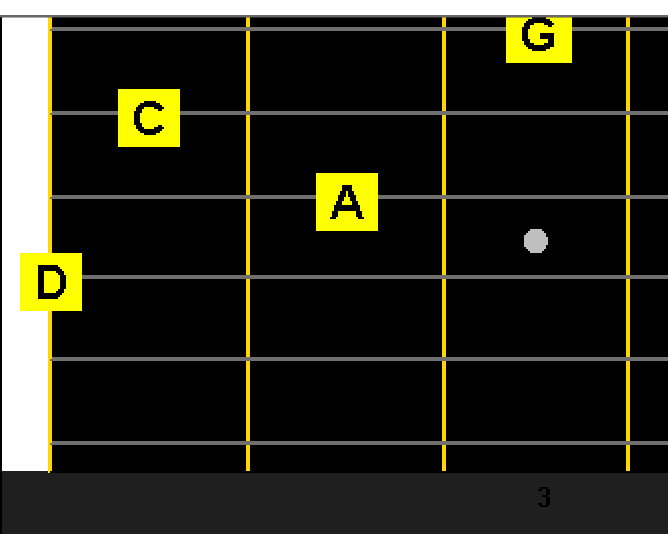
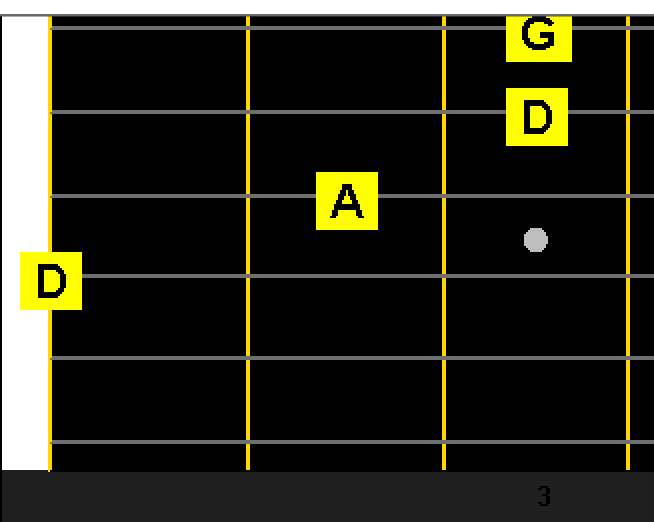
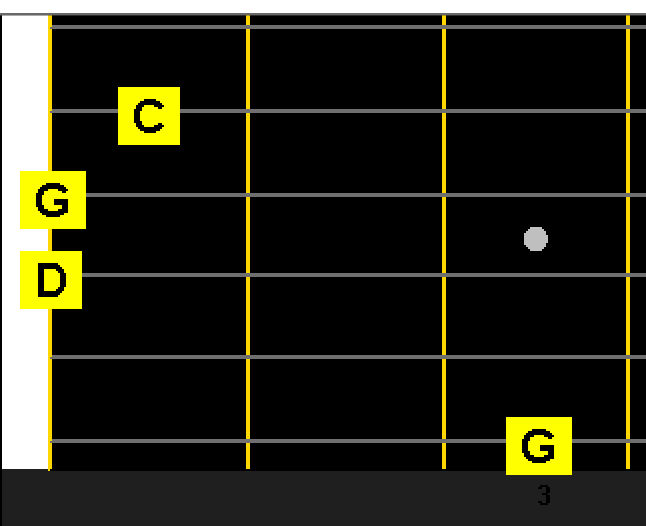
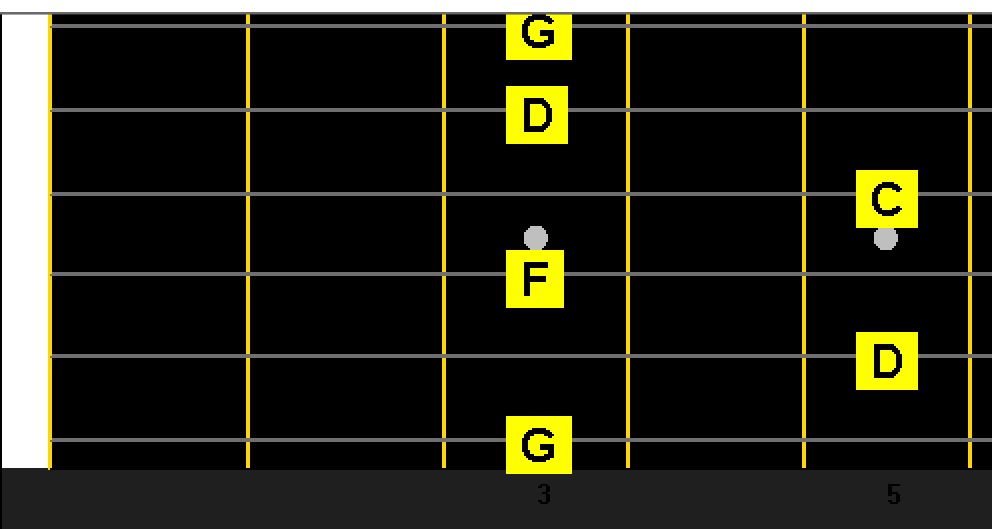
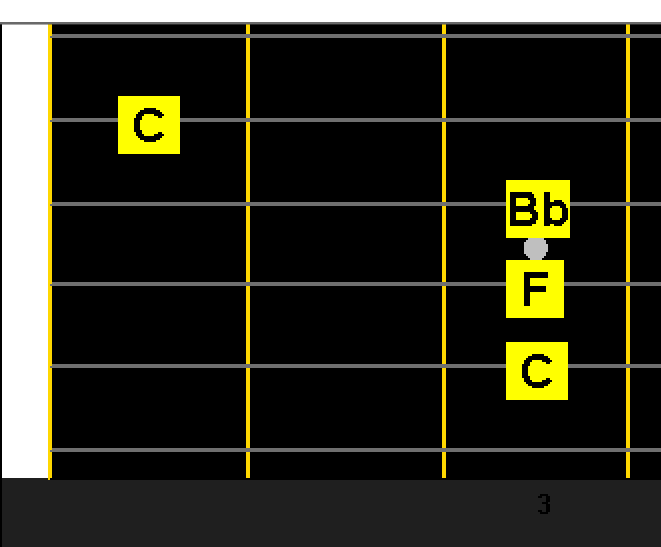
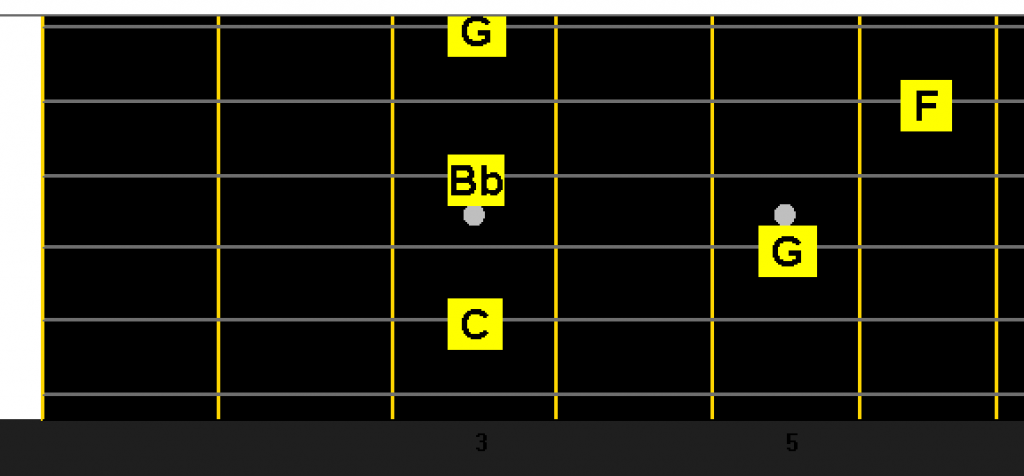
Click here to ask a question …
Practice makes PERFECT! Let’s try to arrange and play another Chord Melody Song!!
Remember, couple of lessons ago, I disclosed the secret to Chord Melody Guitar mastery – that is to make your own chord melody guitar arrangement, as much as possible.
So, let’s try another classic song : “安静” by Jay Chow
Again, we will go through the following steps:
Step 1: Play the melody
Step 2: Find out the chords
Step 3: Combine the melody and the chords
Step 4: Add in the accompaniment
Click here to ask a question …
Step 1: Play the melody
Let’s learn to play chord melody guitar of the song “安静” in the key of ? Major.
First, find out what key is the optimal one for this song.
Try ……..
A better will be C major:
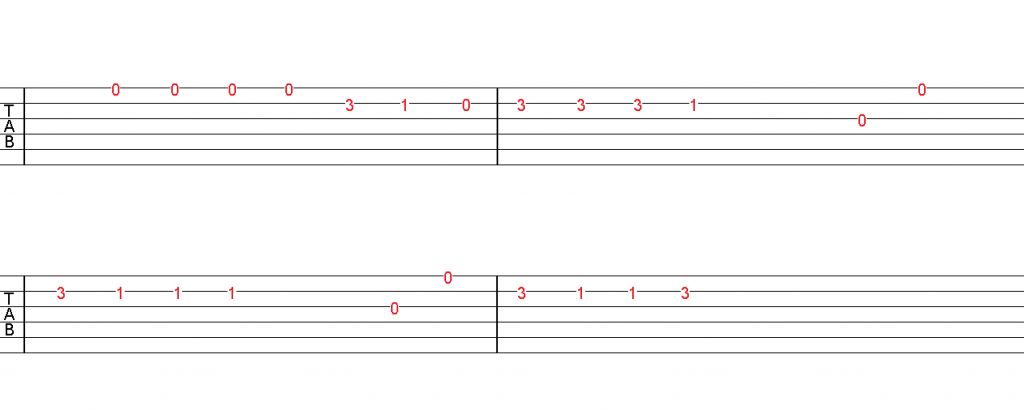
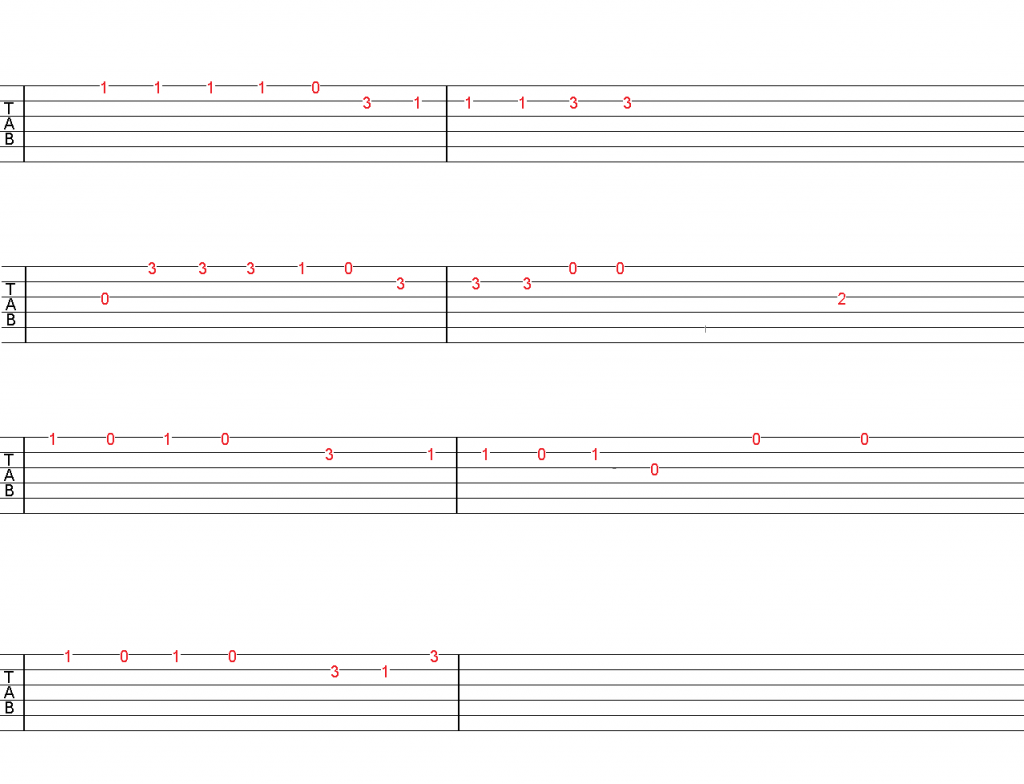
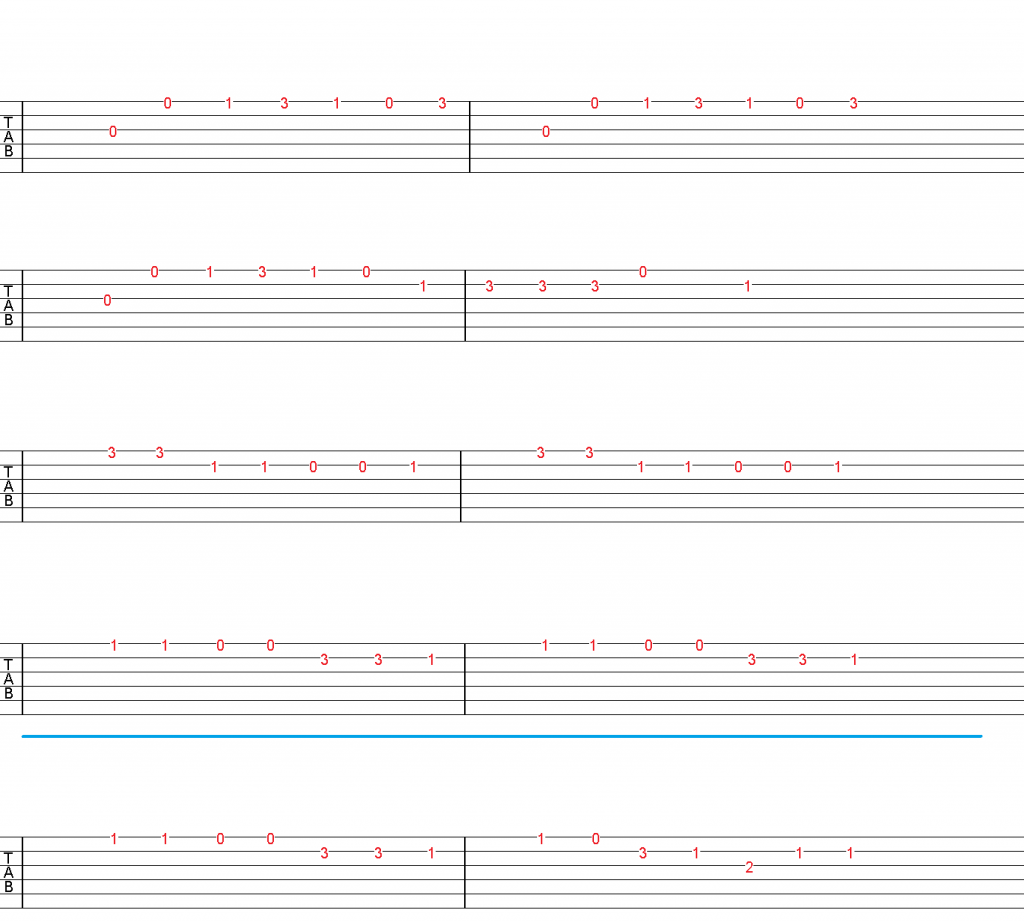
Click here to ask a question …
Step 2: Find out the chords
You can either get them online or use your ears!!
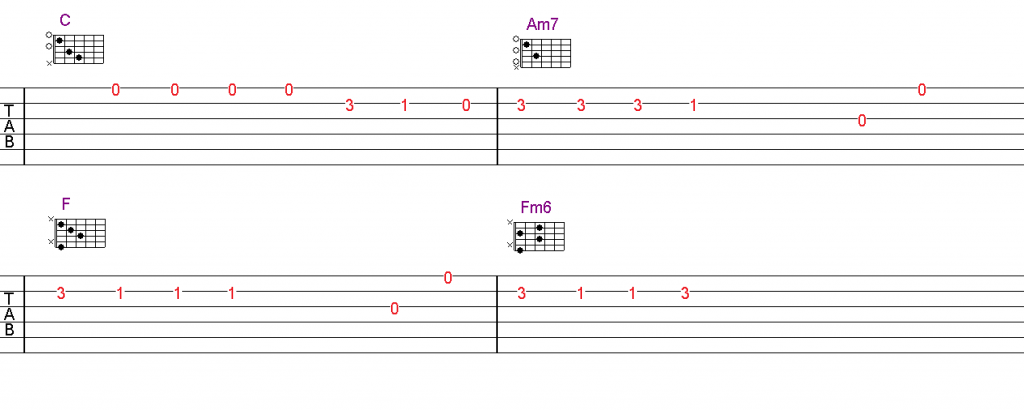
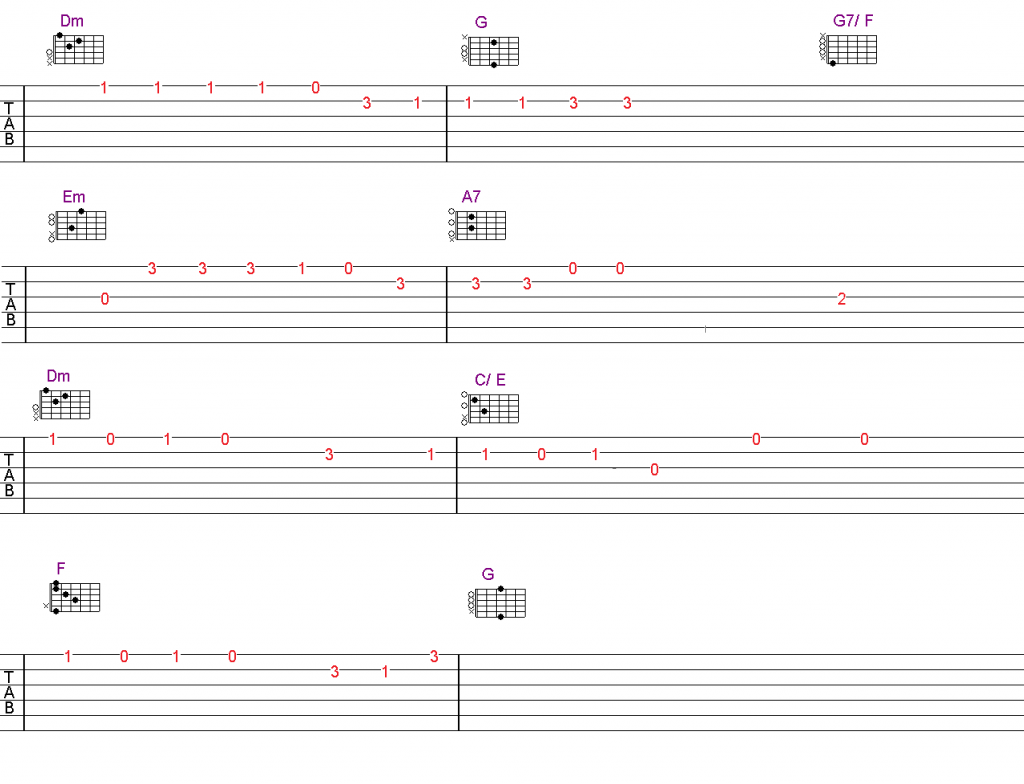
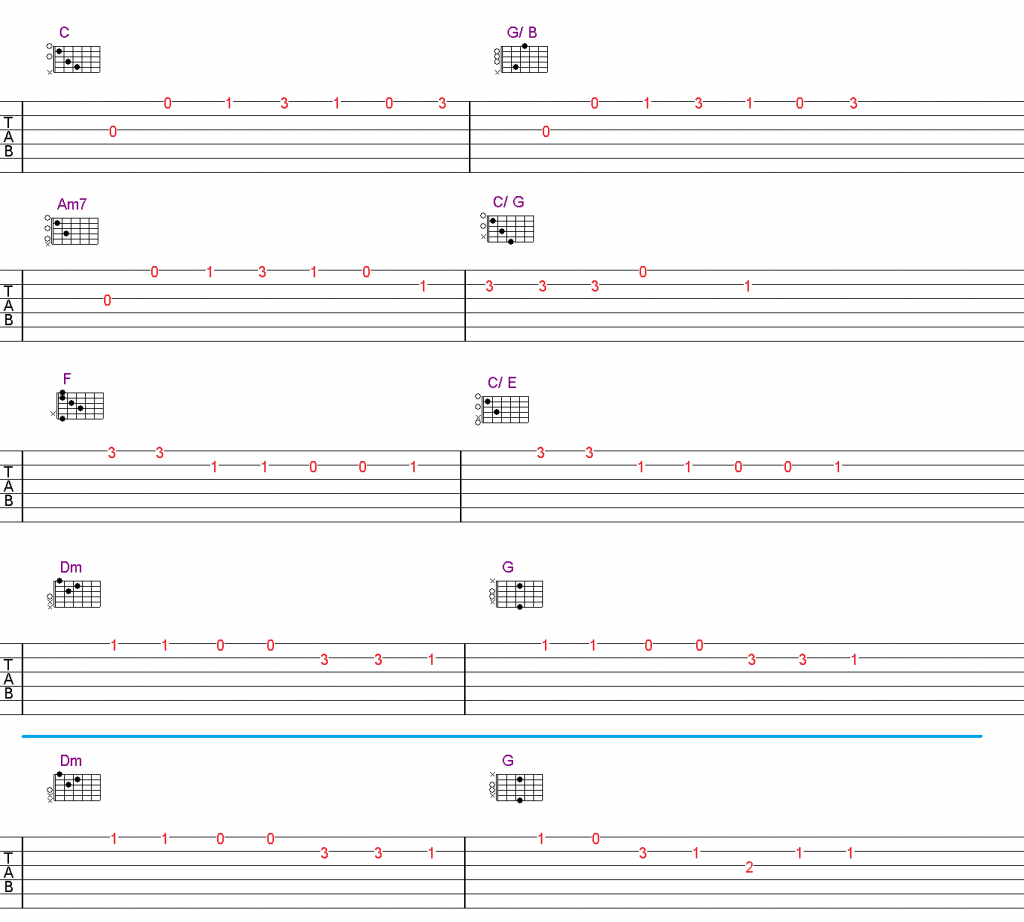
Click here to ask a question …
Step 3: Combine The Melody And The Chords
Let’s combine the melody and the chords.
As we mentioned before, the trick is to play the chords “below” the melody notes. The melody note will be the higher notes of the “chord”. This means we are gonna play part of the chords, below the melody.

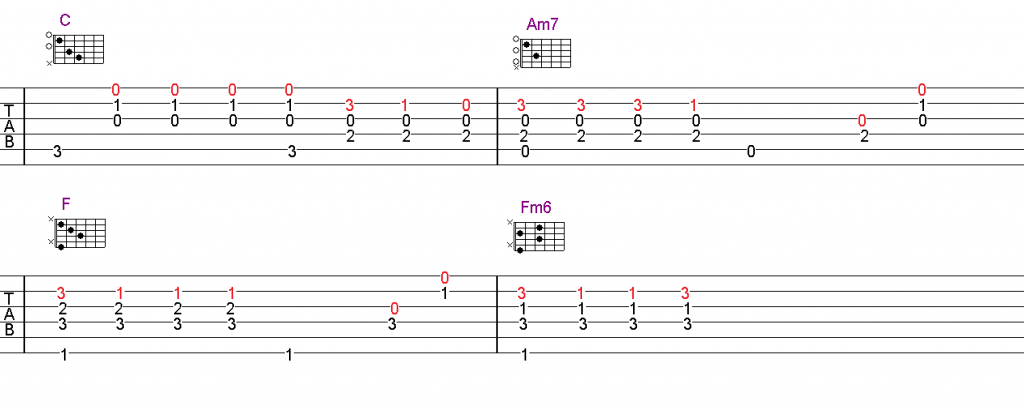
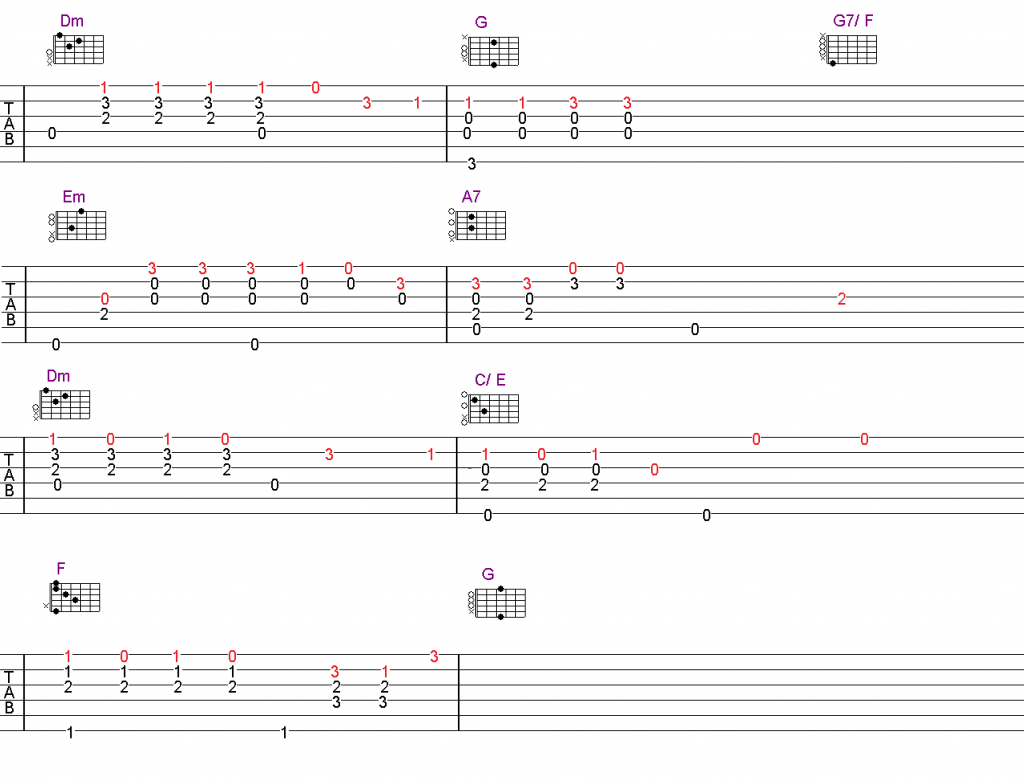
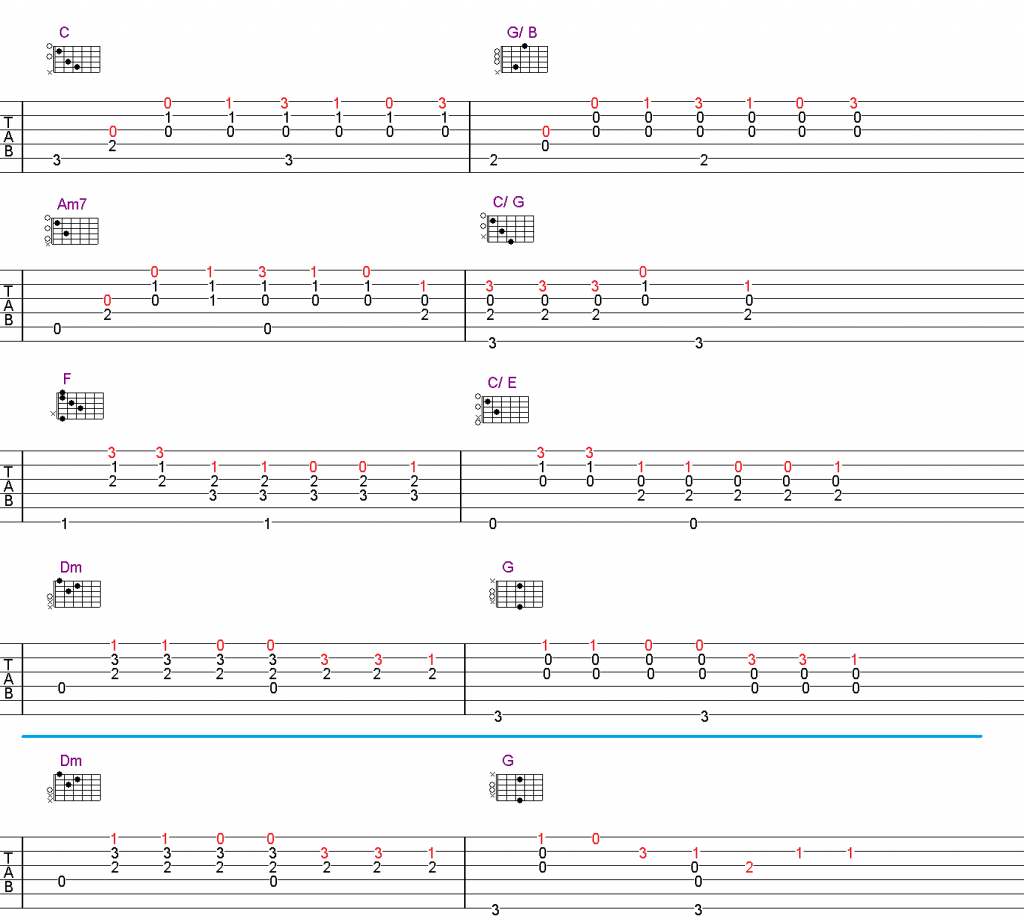
Click here to ask a question …
Step 4: Add In The Accompaniment
Yeah! We have the melody and the chords!!
Let’s make it more complete by filling in the gap between the melody.
We can fill in the gap by playing the plucking accompaniment just like we are accompanying someone to sing:
